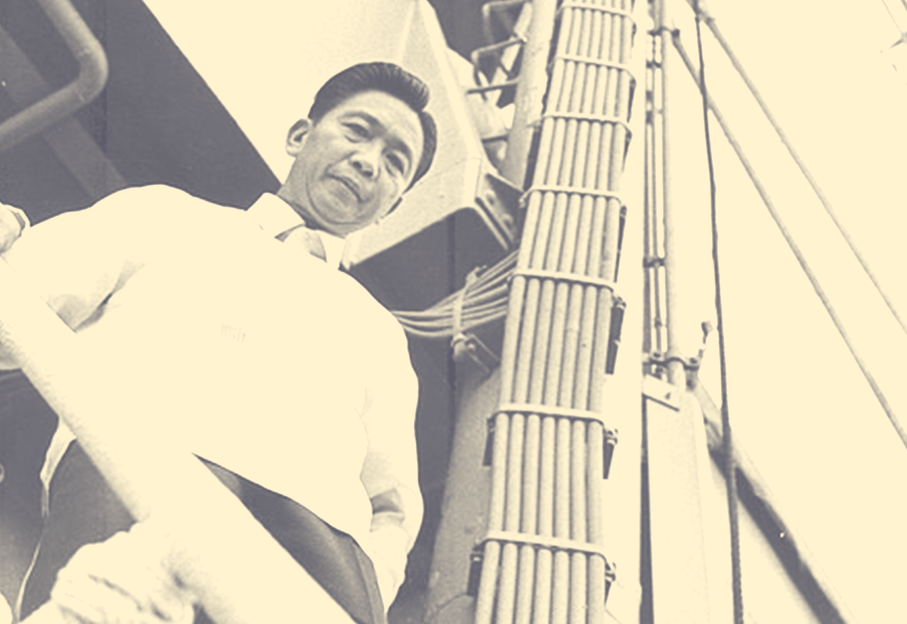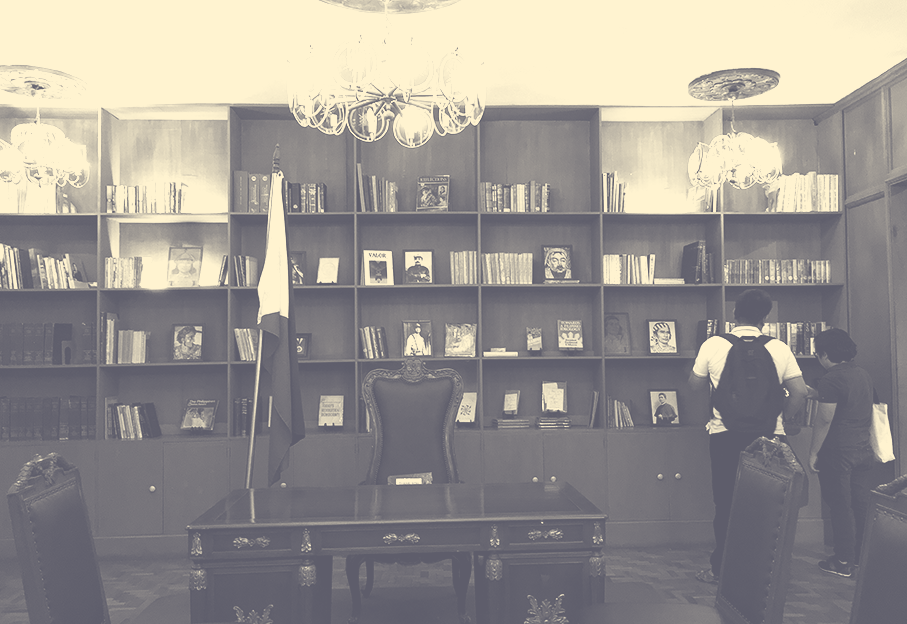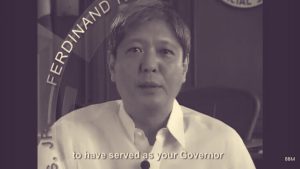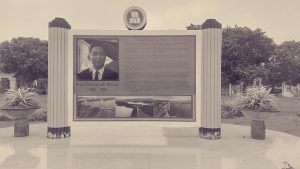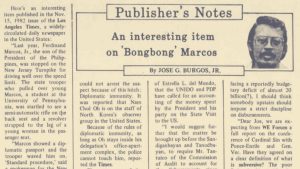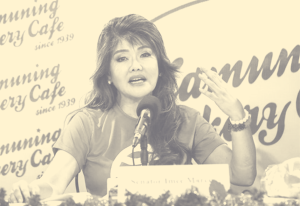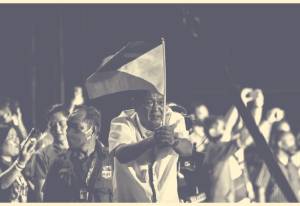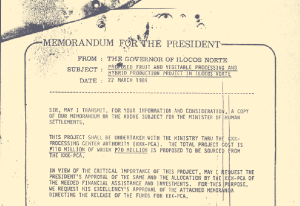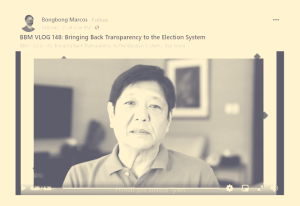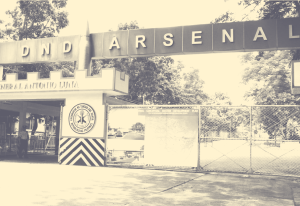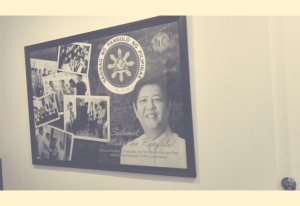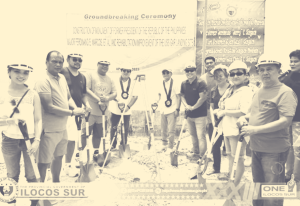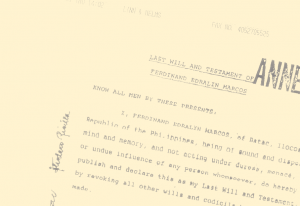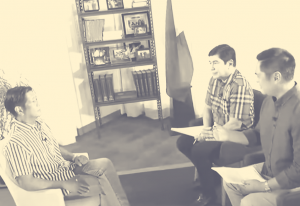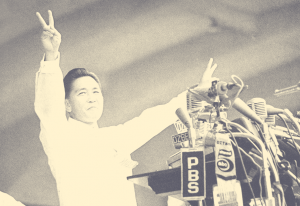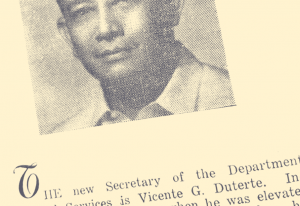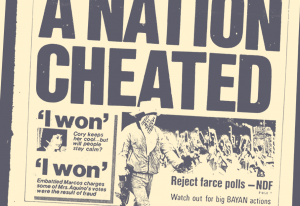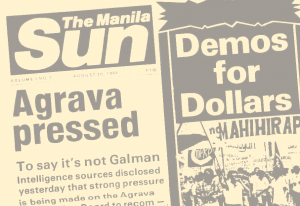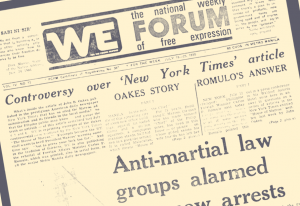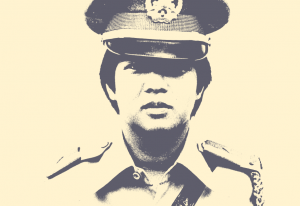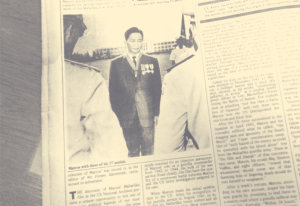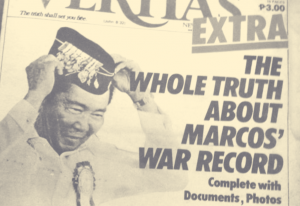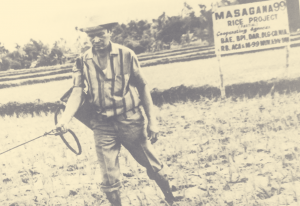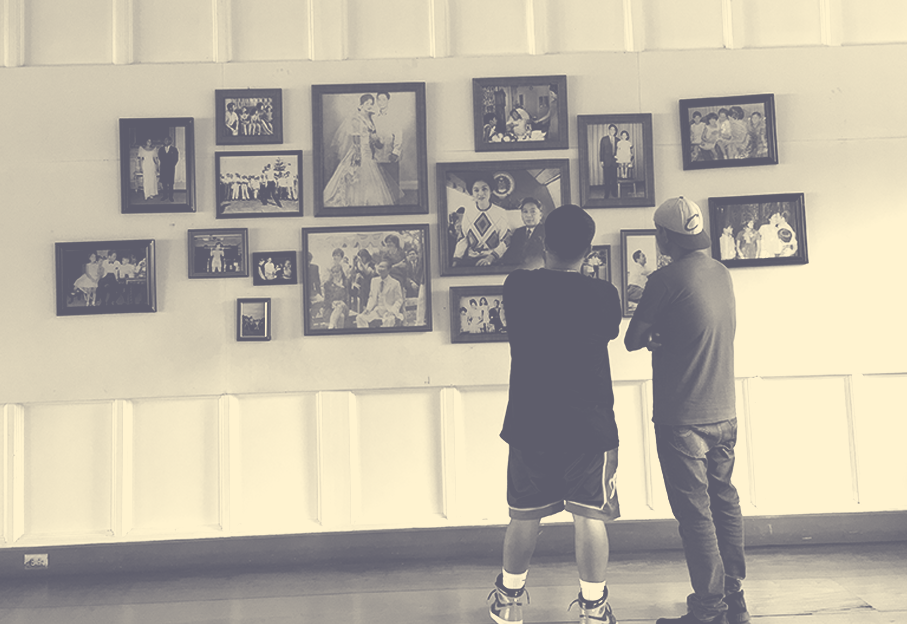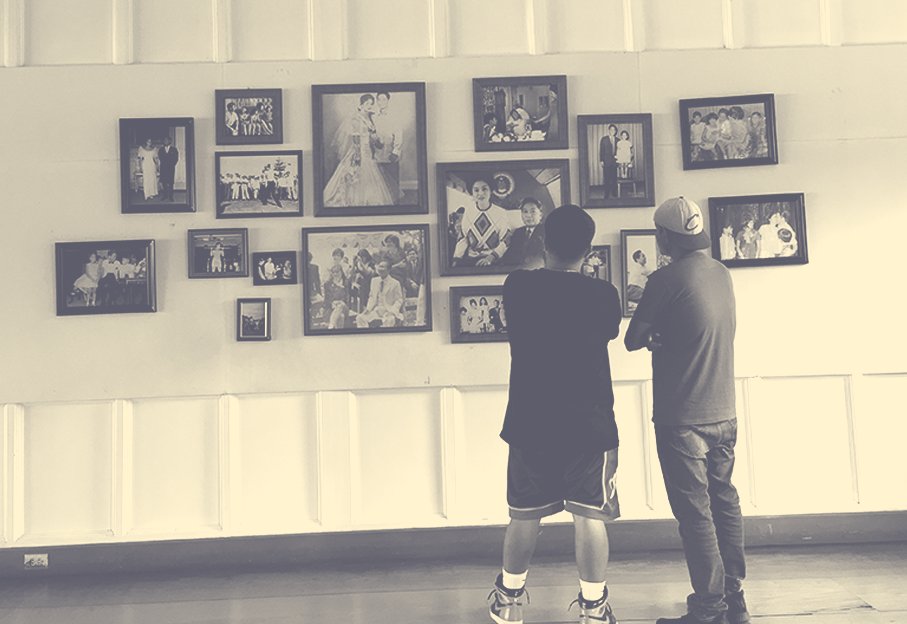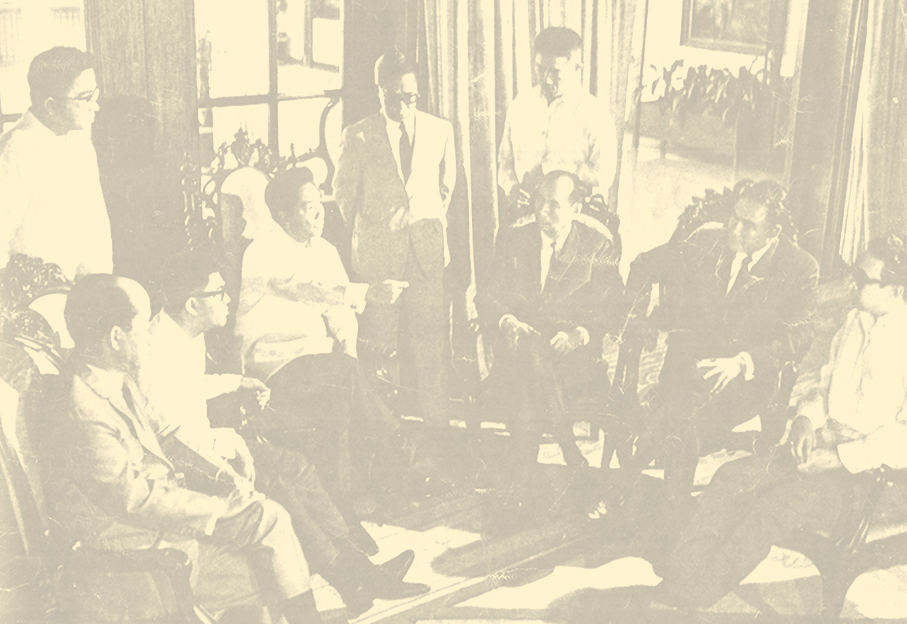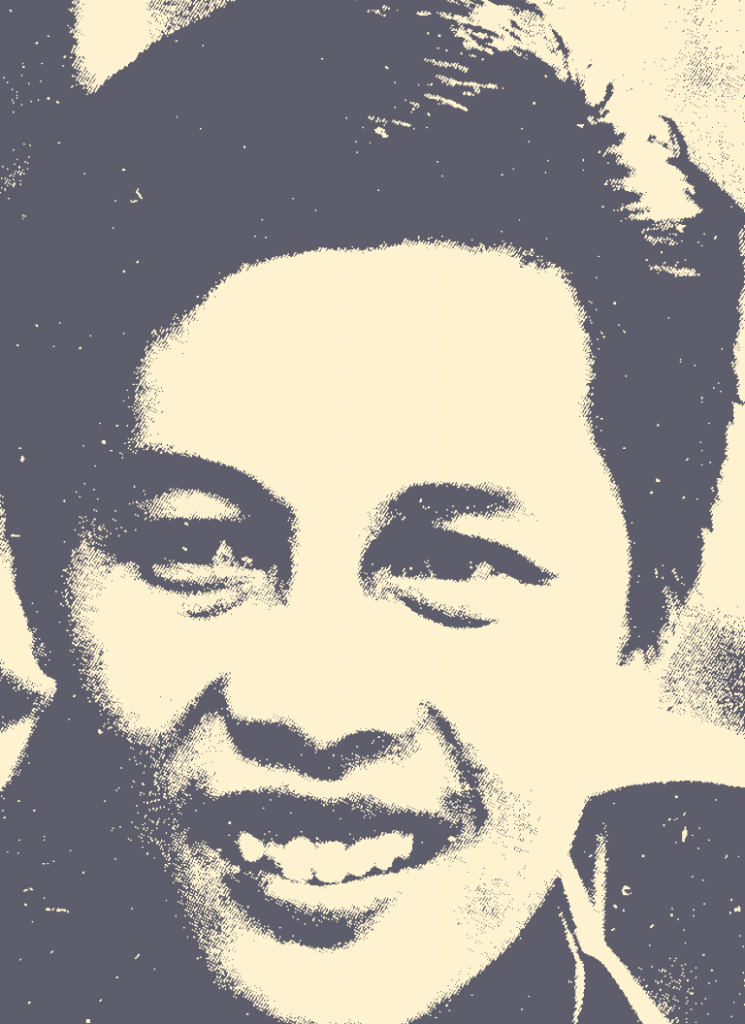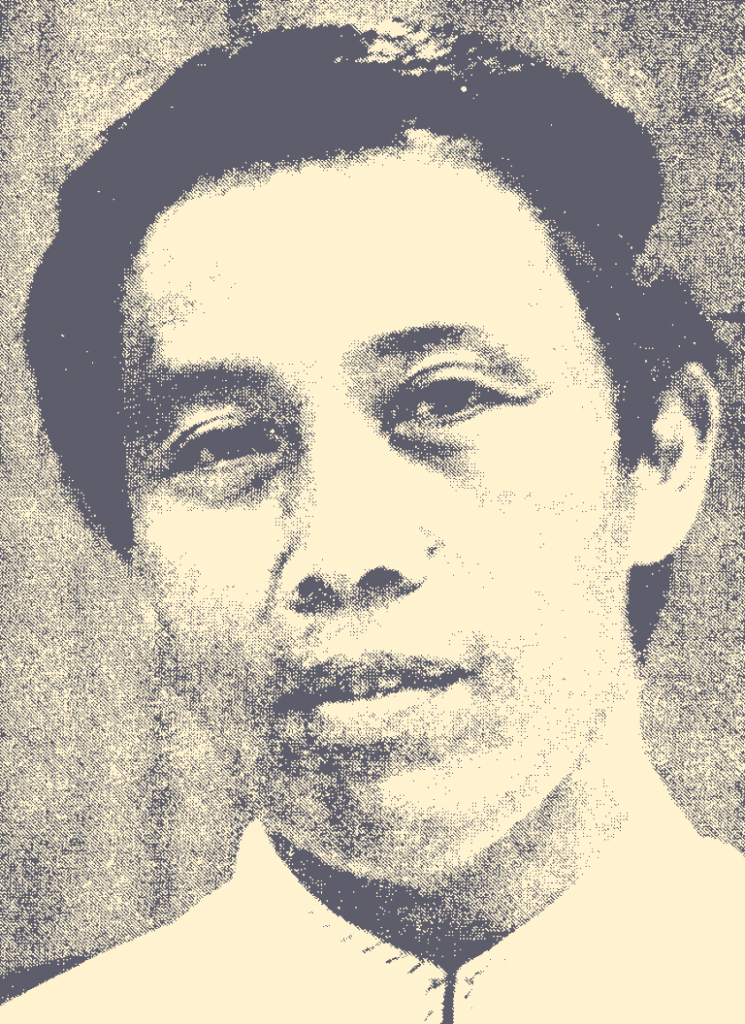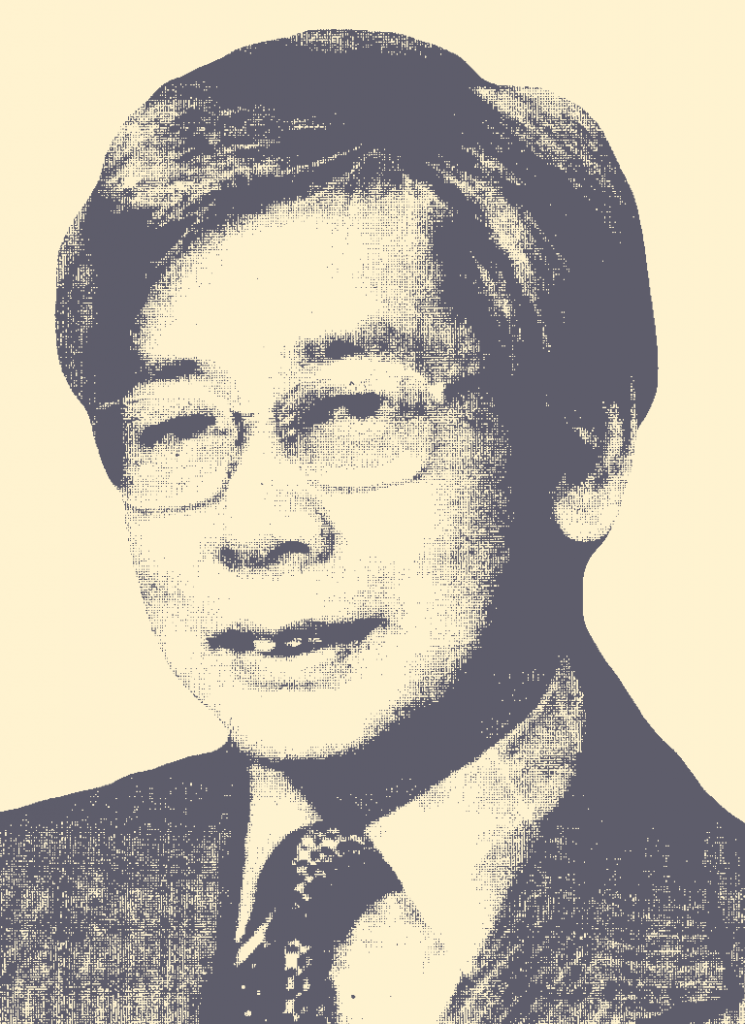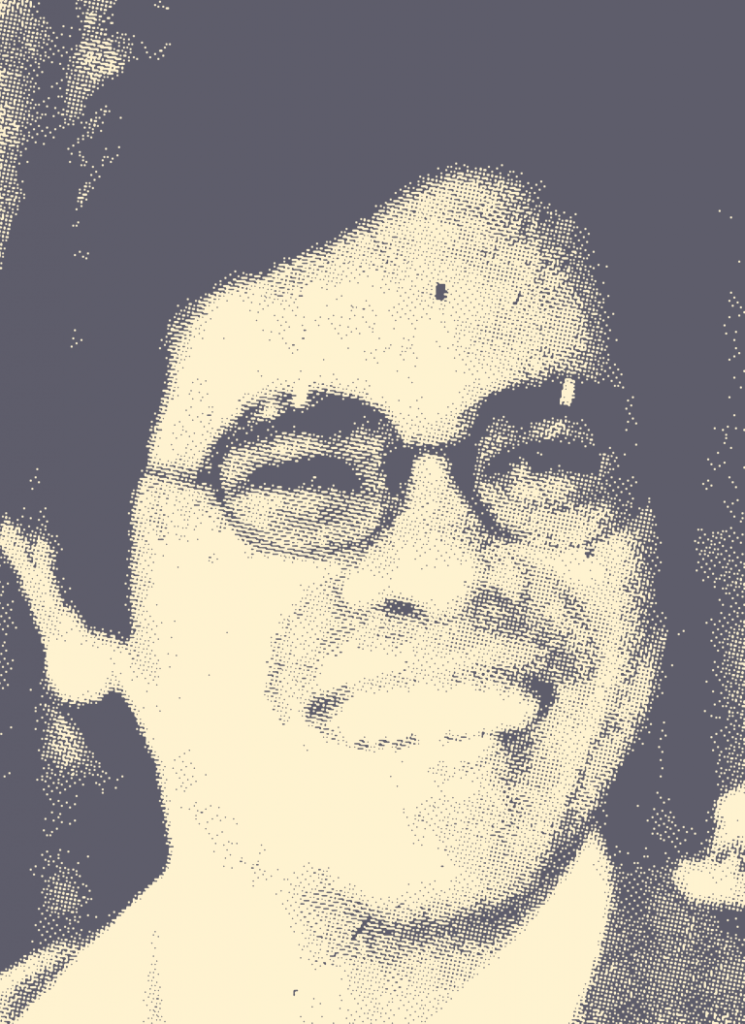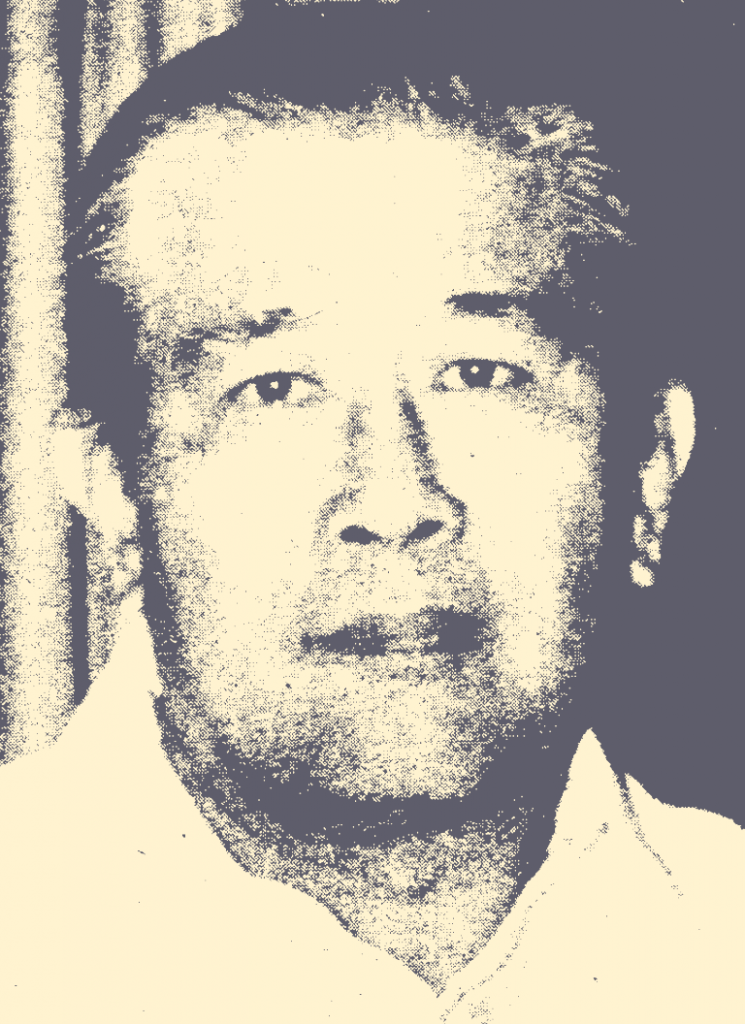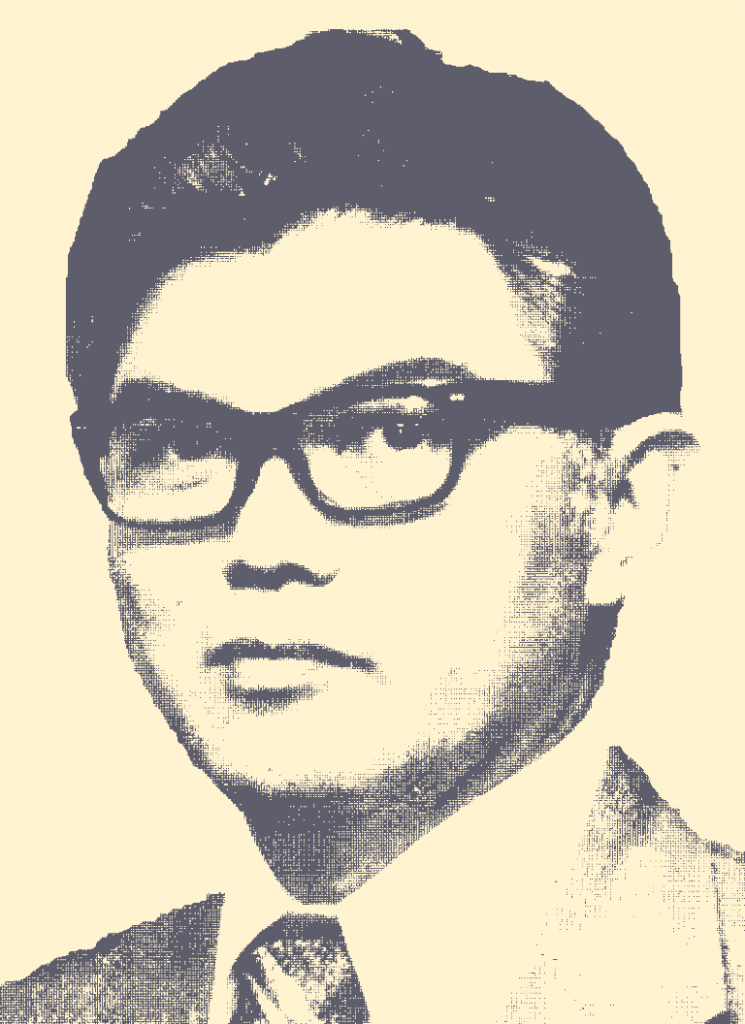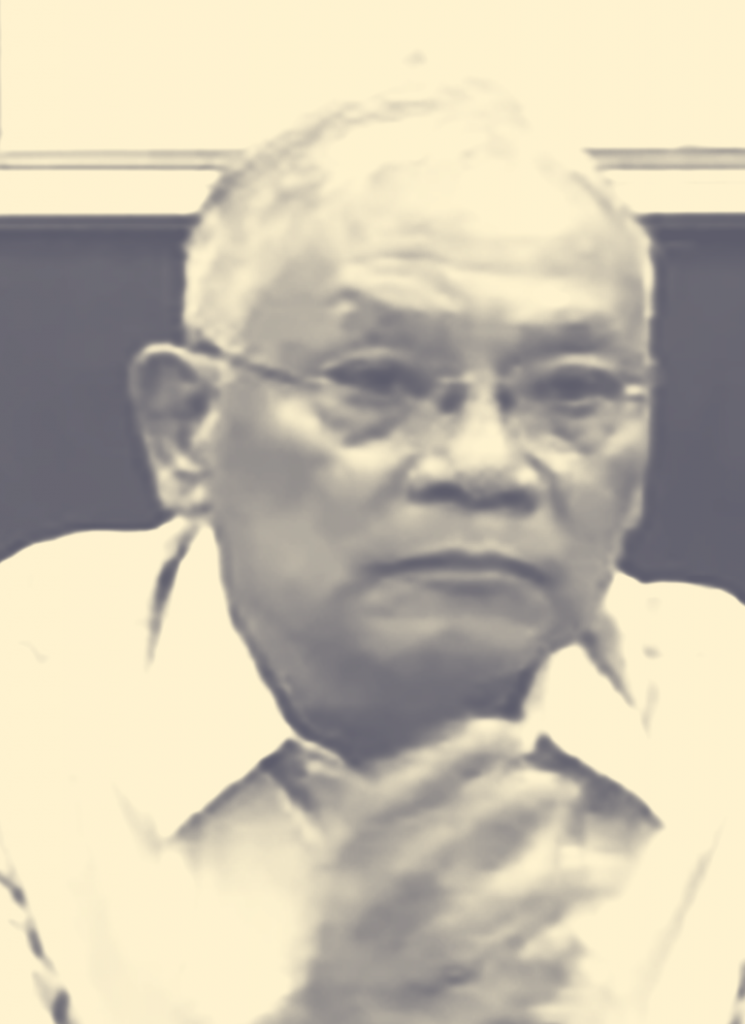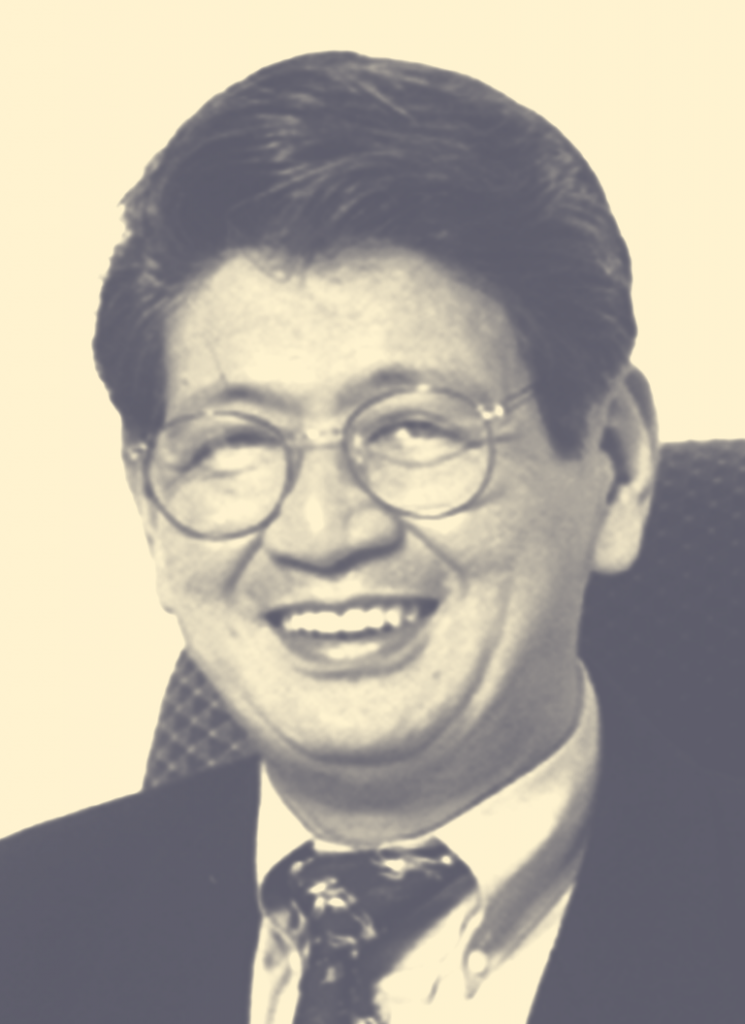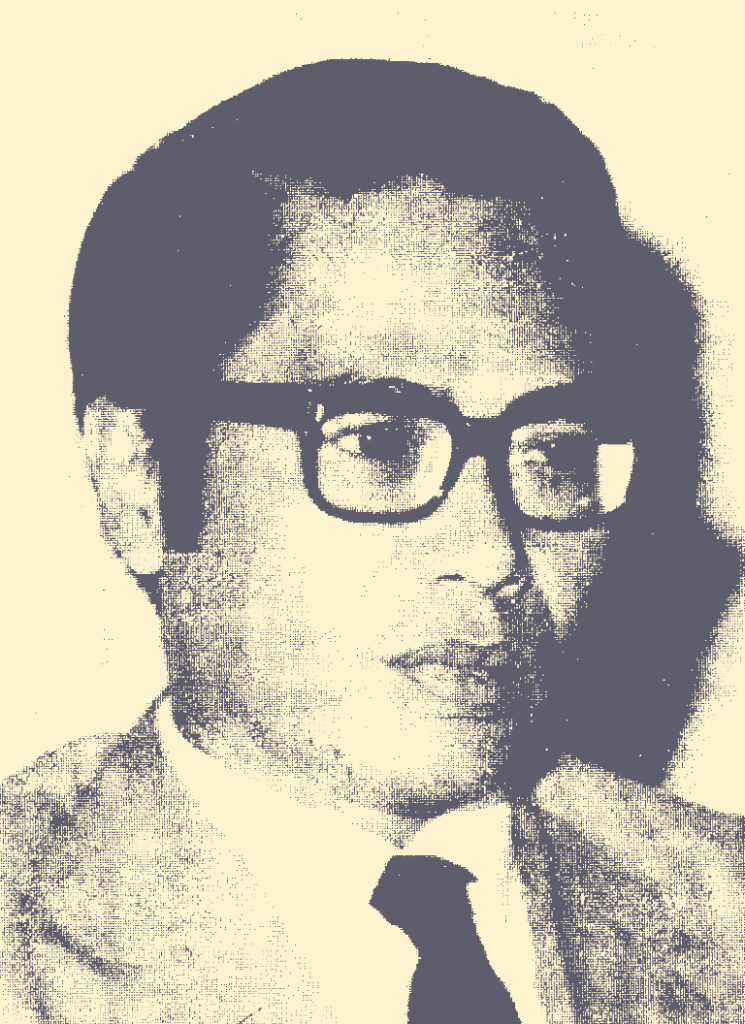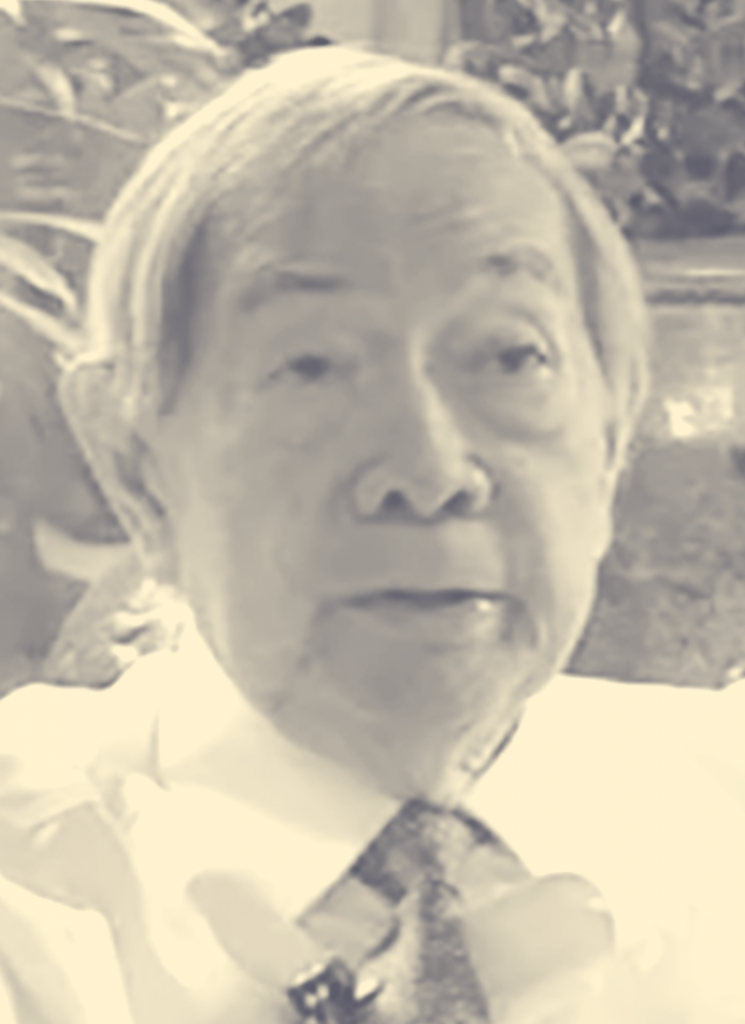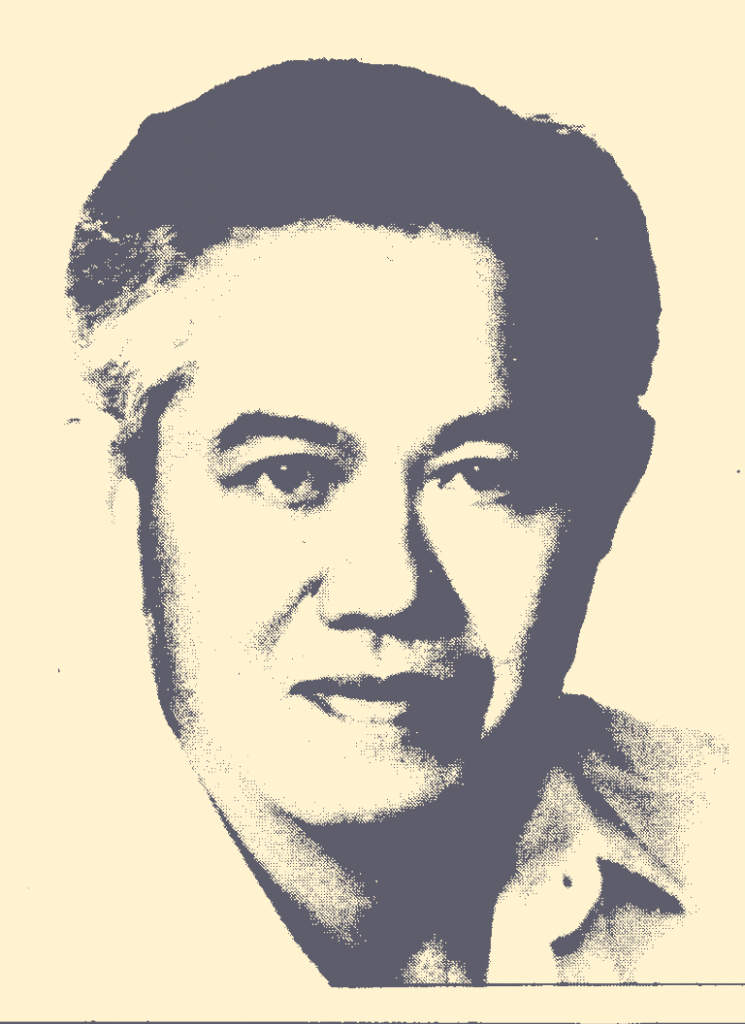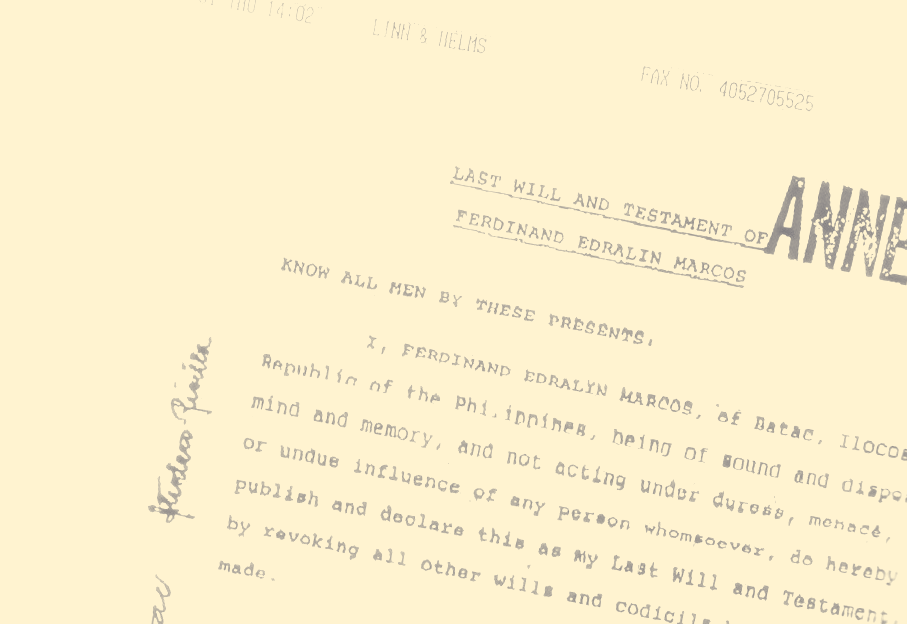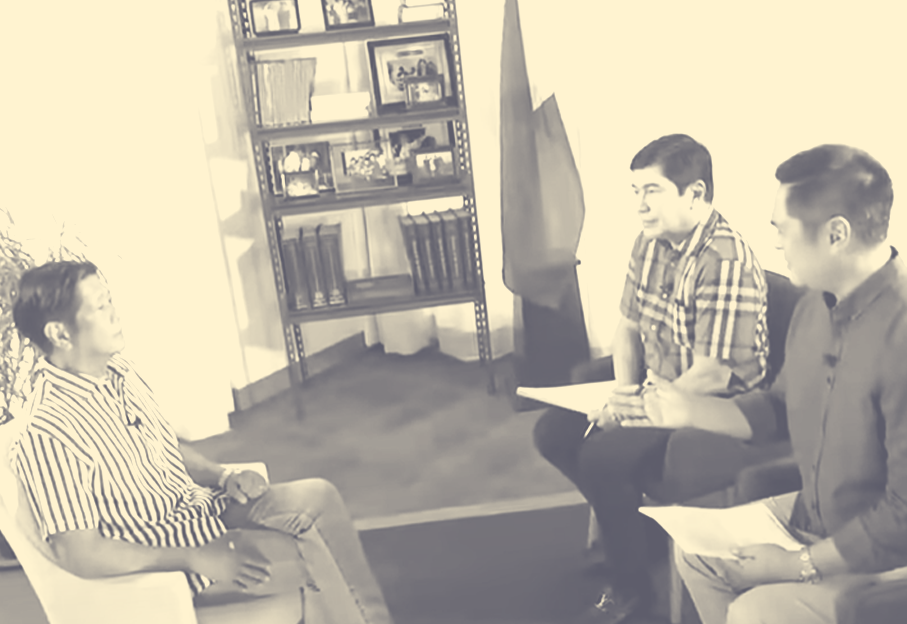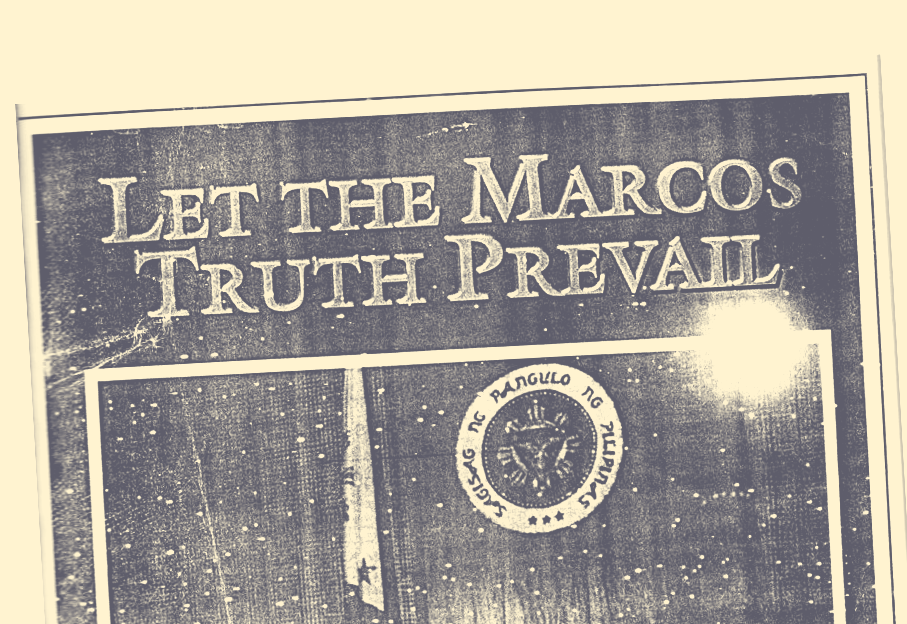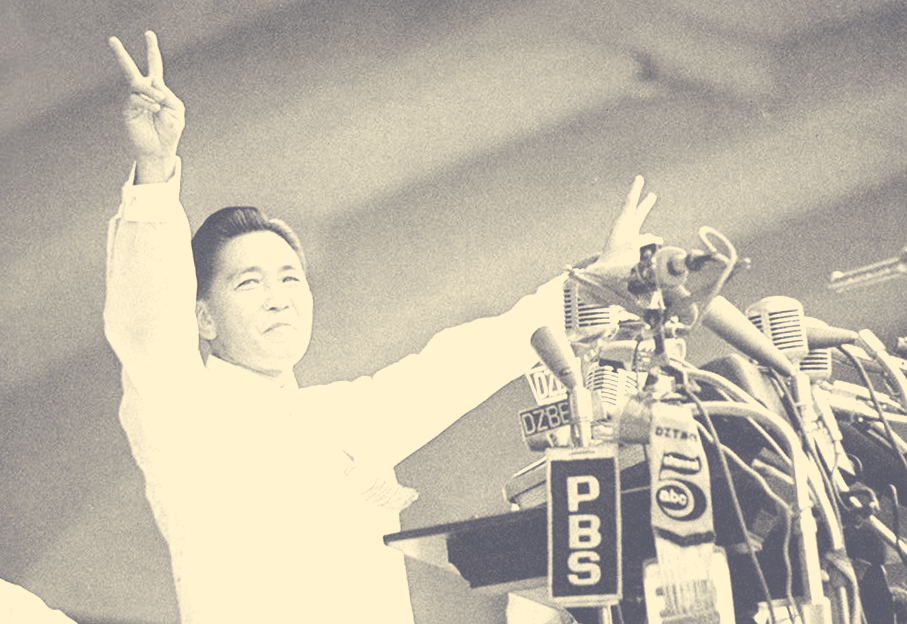The study aims to definitively determine whether the late dictator Ferdinand Marcos profited from his involvement in the 1956 Reparations Agreement between Japan and the Philippines. The explores a bilateral anatomy of plunder—of how the Philippine dictator and his cronies, Japanese businessmen, and politicians colluded to loot Japanese war reparations—by revisiting the literature on kleptocracy, Marcos’s authoritarian rule, and issues of the reparations agreement, examining old and new sources that have recently become available (e.g., Philippine Reparations Commission reports, newspaper clippings, files from the Presidential Commission on Good Government, and declassified US intelligence reports), and consulting Filipino and Japanese scholars who previously worked on these subjects. Existing studies on Marcos and the reparations agreement did not reckon with the sources of information that this proposed research would like to examine, sources that will help untangle the complexities that the reparations agreement caused on both Japan and the Philippines.
Author: diktaduraadmin
- What really is Imee’s agenda?
- Bongbong evades, lies about Edsa
- Millions in public funds for more Marcos Memorials
- How the Marcoses handled an assassination attempt
- Revisiting Bongbong’s 1981 ‘New Jersey Turnpike episode’
- BBM’s fictional version of the Bicol River Basin Development Project
- Imee’s murky identification with KB
- The nearly forgotten shameful tourism program under Marcos Sr.
- Bagong Pilipinas: Shallow, farcical
- The failed bid of Marcos Sr. to do a Romualdez
- Ilocos Norte governor gets P100M for failed tomato venture founded by uncle, President Marcos
- Lies and Misrepresentations in Bongbong Marcos’s BBM Vlog 148
- Marines tout the Bongbong rockets that went bust during Marcos Sr.’s regime
- Imee’s half-truths on Self-Reliance Defense Posture
- What is this Bagong Pilipinas?
- Marcos lies still
- A Marcos monument for a dubious wartime deed to rise in Ilocos Sur
- Marcos Sr. and the April Fools affair
- ‘Ecstatic’ loyalists await their share of the Marcos wealth but is it Fool’s Gold?
- The Bongbong and Imelda Marcos deuterium dud
- All Hail and Glory to the Marcoses!
- The Duterte-Marcos Connection
- The Marcoses: A History of Rejecting Election Defeats
- Why is it named the Ninoy Aquino International Airport?
- Duterte’s frequent absences a grim reminder of Marcos’ tricks to hide illness
- How Marcos suppressed the truth behind Ninoy Aquino’s assassination
- Of Forbidden Stories and Foreign Scrutiny: We Forum and the 1980 New York Times Story, ‘The House of Marcos’
- The documents on Bongbong Marcos’ university education (Part 2 – Wharton School)
- File No. 60: Debunking the Marcos war myth
- File No. 60: A family affair
- Success’ of Masagana 99 All in Imee’s Head
Rosette, Judith Camille E. and Miguel Paolo P. Reyes. 2022. “Dodged Bullet or Missed Opportunity? A History of Planned Monorails for Manila, 1961–1985.” Philippine Studies: Historical and Ethnographic Viewpoints 70(1): 4-43. https://doi.org/10.13185/ps2022.70102 .
Masangkay, Christian Victor A. and Larah Vinda B. Del Mundo. 2016 [published 2020]. “Where to Bury Marcos? Dead Body Politics in the Marcos Playbook.” Kasarinlan: Philippine Journal of Third World Studies. https://www.journals.upd.edu.ph/index.php/kasarinlan/article/view/7264/6327.
Reyes, Miguel Paolo P. 2018. “Producing Ferdinand E. Marcos, the Scholarly Author.” Philippine Studies: Historical and Ethnographic Viewpoints 66(2): 173-218. https://doi.org/10.1353/phs.2018.0017.
Atty. Edre Olalia (NUPL), Fides Lim (Kapatid), Fr. Benjamin Alforque, Jonathan de Santos (NUJP), and TWSC’s Joel Ariate discusses the human rights situation and prospects under the newly-seated Marcos administration. Organized by Move.PH, Karapatan, and the Ecumenical Voice for Peace and Human Rights in the Philippines, the webinar was streamed days ahead of the first Tate of the Nation Address of Ferdinand Marcos Jr.

Reyes discussed online pro-Marcos historical distortion from around the early 2000s to Facebook at the Human Rights Violations Victims’ Memorial Commission’s online conference “The Martial Law Dialogues – Perceptions and Engagement with Post-EDSA Generations” held on February 24, 2022. In his talk, he attempted to answer these two questions:
- What are the antecedents of online pro-Marcos disinformation/ online pro-Marcos disinformation before the widespread use of social media in the Philippines?
- Can we blame social media primarily for the current proliferation of disinformation in favor of the Marcoses?
Joel F. Ariate Jr. and Miguel Paolo Reyes presented the findings of the Marcos Regime Research group in the online conference “Where’s the Lie: Research Findings on Disinformation,” held online on December 9. 2020. The 3rd National Conference on Democracy and Disinformation was held virtually on February 22, 24, and 26 (the presentation was broadcast on February 24).
Ariate and Reyes presented the findings of the UP Third World Studies Center’s Marcos Regime Research project The “Marcos Truths”: A Genealogy of Historical Distortions in the Rappler program On the Campaign Trail with John Nery: The Mechanics of pro-Marcos Disinfo. Ariate and Reyes are joined by communications professor Cheryll Ruth Soriano, who is also a part of the Consortium for Democracy and Disinformation. Streamed on December 15, 2021, Nery asked: How do Marcos disinformation campaigns work? And how will they impact the 2022 elections?
Ed Lingao, Atty. Chel Diokno, Director Joel Lamangan, Kiri Dalena, and TWSC’s Miguel Paolo Reyes talks about the continuing violence, plunder, and divisiveness in Philippine politics in the online conference “Reality Check: Martial Law, Never again” streamed on September 19, 2020. The event was organized by Daang Dokyu in cooperation with Concerned Artists of the Philippines and Directos’ Guild of the Philippines.
Joel F. Ariate Jr. Miguel Paolo P. Reyes, Larah Vinda Del Mundo, and Judith Camille Rosette presented their papers in the panel “Interrogating Historical Revisionism and the Marcos Regime: New Sources on Age-Old Lies” at the 2019 National Conference of the Philippine Historical Association held on September 19-21, 2019 held in NISMED, UP Diliman.
The Marcos Regime Research (MRR) program is the response of the UP Third World Studies Center (TWSC) to the unabated tide of historical revisionism in favor of the Marcos regime—a re-prioritization of research on the rule of Ferdinand Marcos and the continuing influence of the Marcos family and their cronies in the Philippines. Currently, the program mainly consists of funded and in-house historical research projects conducted by the Center’s Marcos Regime Research group. Among the outputs of this program are academic journal articles, conference presentations, and short articles released via online media outlets.
History
The work of the Third World Studies Center’s Marcos Regime Research program can be linked to a research thread running back to the Center’s origins. In 1977, TWSC was established as a non-degree granting program within what was then called the College of Arts and Sciences in UP Diliman, providing researchers a space to articulate scholarly dissent against Ferdinand Marcos’s authoritarian rule. In the immediate aftermath of the Edsa Revolution, the Center continued to engage in or propose research that analyzed the ousted regime while exploring the limits and interstices of the post-dictatorship democratic space. The Center’s director at the time, Prof. Randolf David, even briefly took over and oversaw the closure of the Marcos regime think tank in UP, the President’s Center for Special Studies.
Over time, TWSC increasingly became more focused on democracy and democratization, social movements and civil society, political economy and globalization, peace and human security, and culture and identity in the context of the post-Edsa administrations; research on the Marcos regime was largely relegated to the background. Dr. Teresa Encarnacion Tadem, during her directorship of TWSC (2004-2010) was involved in the oral history project titled “Economic Policymaking and the Philippine Development Experience, 1960-1985,” interviewees for which were technocrats of the Ferdinand Marcos administration. The Center housed the project and provided staff support to its researchers.
It became evident, however, within the 2010s that a Marcos resurgence was in the offing. The Center’s first serious effort to understand and analyze the almost untrammeled march of the Marcoses toward new political heights came in 2013. In UP Diliman, an entire college was renamed in honor of the Marcos regime’s “chief technocrat,” Cesar E.A. Virata. Thus, TWSC researcher Joel F. Ariate Jr. contacted Dr. Eduardo Tadem of the UP Asian Center to discuss the possibility of organizing a public forum to challenge what was seen to be an effort toward unwarranted historical revisionism. The TWSC research staff then wrote a concept note for the forum, which was discussed in June 2013 during a meeting of the staff and then newly appointed TWSC director Dr. Ricardo Jose with Dr. Tadem and Dr. Amado Mendoza Jr. of the UP Diliman Department of Political Science. The forum became the first in a series titled “Marcos Pa Rin! Ang Mga Pamana at Sumpa ng Rehimeng Marcos,” which ran from July 2013 to February 2014.
In July 2016, TWSC held a protest-forum on the then impending burial of Ferdinand Marcos at the Libingan ng mga Bayani. Titled “Ang Bangkay ni Duterte,” it was the first of TWSC’s efforts that year to counter giving state-sanctioned honors to the late dictator. This was followed by a series of articles published by Vera Files that tried—unsuccessfully—to highlight reasons, historical and legal, why Marcos’s remains should not be interred at the Libingan ng mga Bayani. These were the first of many research outputs of the MRR group published by Vera Files, at times syndicated by other media outlets, which were written in response to Marcos-related developments or in commemoration of Marcos-related anniversaries.
Also in 2016, while the Center and its researchers were involved in the research program titled “The Mass Transit System in Metro Manila: From Tranvia to MRT, 1879-2014,” Dr. Meynardo Mendoza of Ateneo de Manila University gave the Center access to select digitized files in the custody of the Presidential Commission on Good Government (PCGG) that were related to mass transit during the Marcos regime. Realizing the value of this cache of files as a largely untapped source for historical research, then TWSC director Ricardo Jose requested a complete set of the PCGG files digitized as of September 2017 from one of the cache’s official repositories, the National Historical Commission of the Philippines (NHCP). The refinement of the file catalogs and cataloging of uncategorized files was initiated as an in-house project of the MRR group, after the inclusion therein of Larah Vinda Del Mundo, in late 2018.
Late 2017 saw the publication of a seven hundred-page issue of Kasarinlan: Philippine Journal of Third World Studies containing the proceedings of the “Marcos Pa Rin!” public forum series and relevant appendices. The volume was co-published by NHCP.
In September 2018, in reaction to the deluge of pro-Marcos narratives borne out of lies that have colonized social media, the Facebook and Twitter pages called “Did a Marcos Lie Today?” were established by Ariate to swiftly counter the lies that the Marcoses often resort to to advance themselves in politics; lies from the Marcoses themselves serve as prompts for the pages’ posts. “DAMLT” thus serves as the MRR group’s social media fact-checking platform.
In late 2019, under the term of TWSC director Joseph Palis, the MRR group secured funding for two research projects: “The ‘Marcos Truths’: A Genealogy of Historical Distortions,” co-headed by Miguel Paolo P. Reyes and Ariate, funded by the Consortium on Democracy and Disinformation; and “A Bilateral Anatomy of Plunder: Ferdinand E. Marcos and the Looting of the Japanese War Reparations,” led by Reyes, funded by the Office of the Chancellor of UP Diliman through the Office of the Vice Chancellor for Research and Development. The former was concluded in October 2020.
Coverage
- Limpin, Dianna Therese N. 2019-2020. “Pushing Back Against the Lies: Efforts to Fact-check the Marcoses on Social Media.” Social Science Information Vol. 47-48: 9-13. https://pssc.org.ph/wp-content/pssc-ssi/2019-2020/PSSC-SSI%20Vol%2047-48%20(2019-20).pdf.
- Casilao, Joahna Lei. 2020. “Imee Marcos’ Claims Misleading, Downplays RITM Achievements – Report.” GMA News Online, April 25. https://www.gmanetwork.com/news/news/nation/735590/marcos-claims-misleading-downplays-ritm-achievements-report/story/.
- Berdos, Enrico. 2020. “Propaganda Web: Pro-Marcos Literature, Sites, and Online Disinformation Linked.” Vera Files, December 11. https://verafiles.org/articles/propaganda-web-pro-marcos-literature-sites-and-online-disinf. Syndicated in ABS-CBN News.
- Pangue, Jene-Anne. 2020. “Disinformation Researchers Unpack the Game of Lies and its Impact on Democracy.” Rappler, December 10. https://www.rappler.com/moveph/disinformation-researchers-unpack-lies-social-media-impact-democracy.
- Gregorio, Xave. 2020. “Researchers Find Links Between Pro-Marcos Books, Sites, Online Disinformation. Philstar.com, December 12. https://www.philstar.com/headlines/2020/12/12/2063307/researchers-find-links-between-pro-marcos-books-sites-online-disinformation.
- Nery, John. 2020. “The Color of Malice.” Philippine Daily Inquirer, December 15. https://opinion.inquirer.net/136184/the-color-of-malice.
- D&D. 2021. “One Fiction Ends but False Narratives Remain.” #FightDisinfo, February 19. https://fightdisinfo.substack.com/p/one-fiction-ends-but-false-narratives.
- Gomez, Buddy [Tomas III]. 2021. “Marcos Delusion Anchored on Deception and Disinformation.” ABS-CBN News, February 27. https://news.abs-cbn.com/blogs/opinions/02/27/21/marcos-delusion-anchored-on-deception-and-disinformation.
- University of the Philippines Open University. 2021. “UPOU Launches Free Online Course on Wikipedia Editing and Fighting Historical Distortion.” University of the Philippines Open University, accessed November 2, 2021. https://www.upou.edu.ph/news/upou-launches-free-online-course-on-wikipedia-editing-and-fighting-historical-distortions/.
- Regalado, Pia. 2021. “Those Marcos Videos on TikTok are Rooted in Decades of Misinformation.” Reportr, September 21. https://www.reportr.world/news/from-books-to-tiktok-why-fake-news-about-the-marcoses-persists-60-years-later-explainer-a4832-20210921-lfrm.
- CFMR Staff. 2021. “From Numbers to Testimonies: Media Remembers Grim of Martial Law.” Center for Media Freedom & Responsibility, September 24. https://cmfr-phil.org/media-ethics-responsibility/journalism-review/from-numbers-to-testimonies-media-remembers-grim-of-martial-law/.
- NB. 2021. “Marcos Sr. Lied About Bongbong’s Oxford Stint as Early as 1978 – Vera Files Report.” GMA News Online, November 2. https://www.gmanetwork.com/news/news/nation/809248/marcos-sr-lied-about-bongbong-s-oxford-stint-as-early-as-1978-vera-files-report/story/
- Cos, Rowena. 2021. “Marcos Sr. Knew and ‘Lied’ About Bongbong’s Academic Woes at Oxford: Vera Files Research.” ABS-CBN News, November 2. https://news.abs-cbn.com/news/11/02/21/bongbongs-oxford-degree-a-43-year-old-lievera-files.
- Buan, Lian. 2021. “Dictator’s Officials Lobbied Oxford to Give Bongbong Marcos Diploma – UP, Vera Files.” Rappler, November 3. https://www.rappler.com/nation/ferdinand-marcos-officials-lobbied-oxford-to-give-bongbong-diploma-up-vera-files-reports.
- Montalvan, Antonio II. 2021. “People’s Money Used for Bongbong’s Education in Oxford, Wharton.” Vera Files, November 3. https://verafiles.org/articles/peoples-money-used-bongbongs-education-oxford-wharton.
- Collas-Monsod, Solita. 2021. “Yes, I Tutored Bongbong in Economics.” Philippine Daily Inquirer, November 6. https://opinion.inquirer.net/146064/yes-i-tutored-bongbong-in-economics.
- Ponce de Leon, Inez. 2021. “Babying BBM.” Philippine Daily Inquirer, November 12. https://opinion.inquirer.net/146310/babying-bbm.
- Sherwell, Philip. 2021. “Row Over Oxford Degree Comes Back to Haunt Ferdinand Marcos Jr.” The Sunday Times, November 21. https://www.thetimes.co.uk/article/row-over-oxford-degree-come-back-to-haunt-ferdinand-marcos-jr-695gbdg5l.
- Montalvan, Antonio J. II. 2021. “Dictator Marcos Used Diplomats to Lie.” Vera Files, November 23. https://verafiles.org/articles/dictator-marcos-used-diplomats-lie.
- Berdos, Enrico. 2021. “Vera Files Fact Check Yearender: Marcos Jr.’s Presidential Bid Props Up Pro-Marcos Propaganda.” Vera Files, December 18. https://verafiles.org/articles/vera-files-fact-check-yearender-marcos-jrs-presidential-bid.
- Vitug, Marites Dañguilan. 2022. “Marcos Jr.’s House, Servants, and Guns in the US.” Rappler, January 31. https://www.rappler.com/plus-membership-program/exclusive-content/marcos-jr-s-house-servants-and-guns-in-the-us/.
- Buan, Lian. 2022. “Josefa Marcos Nagsinungaling din Tungkol sa Papel niya sa World War II.” Rappler, February 26. https://www.rappler.com/nation/josefa-marcos-also-lied-paper-world-war-2-university-philippines-vera-files-reports/.
- Cabato, Regine and Shibani Mahtani. 2022. “How the Philippines’ Brutal History is Being Whitewashed for Voters.” The Washington Post, April 13. https://www.washingtonpost.com/world/2022/04/12/philippines-marcos-memory-election.
- Roa, Ana, Krixia Subingsubing, and Mariejo S. Ramos. 2022. “TikTok as Poll Battlefield: Lies Spreading Unchecked.” Philippine Daily Inquirer, April 27. https://newsinfo.inquirer.net/1588389/tiktok-as-poll-battlefield-lies-spreading-unchecked.
On May 25, 2014, Yutaka Katayama entrusted to the Third World Studies Center (TWSC), College of Social Sciences and Philosophy, University of the Philippines Diliman 27 interview transcripts from the project “Economic Policymaking and the Philippine Development Experience, 1960-1985: An Oral History.” Katayama was speaking in behalf of the group of Japanese and Filipino academics that worked on said project that was funded by the Japan Society for the Promotion of Science through Kobe University.
While the oral history project was on-going, TWSC housed it and provided staff support.
Below are the edited interview transcripts of the technocrats who served in the administration of Philippine President Ferdinand E. Marcos (1965-1986). They are: Manuel Alba, Jose Conrado “Jolly” Benitez, Onofre Dizon Corpuz, Armand V. Fabella, Hilarion Henares, Jaime Laya, Placido Mapa, Horacio “Boy” Morales Jr., Vicente Paterno, Sixto K. Roxas, Francisco “Kit” Tatad, and Cesar Virata.
For the overview of the project and its preliminary findings, please read this edited workshop proceedings published in Kasarinlan: Philippine Journal of Third World Studies, Vol. 25, Nos. 1-2 (2010).
For a more detailed and critical work on the Marcos technocracts, read Teresa S. Encarnacion Tadem’s Philippine Politics and the Marcos Technocrats: The Emergence and Evolution of a Power Elite (Quezon City: Ateneo de Manila University Press, 2019).
Originally published by Vera Files on June 29, 2022.
Tomorrow, Ferdinand “Bongbong” Marcos Jr. becomes the 17th president of the Republic of the Philippines.
Many of the so-called Marcos loyalists are, of course, ecstatic. Two of them, businessperson Serafia “Cherry” Cobarrubias and broadcaster/writer Rita Gadi, shared their joy—and pro-Marcos propaganda—on the livestreamed program of the latter, The Rita Gadi Hour, a few weeks after the May 9 elections.
Cobarrubias, who reportedly helped fund the December 1989 coup attempt against Corazon Aquino, insisted that Bongbong’s win was a miracle; that “the voice of God is the voice of the people”; and that members of the clergy who spoke against Bongbong should be ashamed of themselves and ask for forgiveness. Gadi, Marcos regime propagandist, insisted that there is no evidence that Marcos Sr.’s wealth came from the state’s coffers. Near the end of the livestream, Cobarrubias claimed that the former dictator, on his deathbed, said that only 3% of his wealth would be kept for his family and the rest of his assets worldwide “should go to the Filipino people.”

It seems safe to say, at least based on social media, that some who voted for Bongbong did so based on these claims, including the narrative that the family’s wealth would be used for the benefit of the entire country should a Marcos reoccupy Malacañang. Many loyalists believe that promise that was often repeated by Bongbong’s mother, Imelda.
Documents, however, show that Marcos Sr. himself never made such a pledge. At best, he set up the Ferdinand E. Marcos Foundation (FEMF) that did appear to serve a charitable purpose, in contrast to several other Marcos “foundations” that clearly functioned to help the family retain wealth that is far beyond what they could have legally earned. Ambiguous claims regarding FEMF’s funding sources and purpose became a basis for the Marcos family’s improbable vow to share their wealth. Such distortion of the truth then mutated into the scams that further propagated the myth of bounty for loyalty to the Marcoses.
THE FERDINAND E. MARCOS FOUNDATION
In 1970, at the start of his second term as president, Marcos Sr. publicly announced that he was putting all of his wealth in a foundation bearing his name. In a statement, the chief executive said he was motivated by “the strongest desire and the purest will to set the example of self-denial and self-sacrifice for all [his] people.” Records of the Security and Exchange Commission show that FEMF filed its articles of incorporation and by-laws on January 21, 1970, but in her book Marcos Martial Law: Never Again, author Raissa Robles said that the foundation’ registration had already been revoked by 2015.
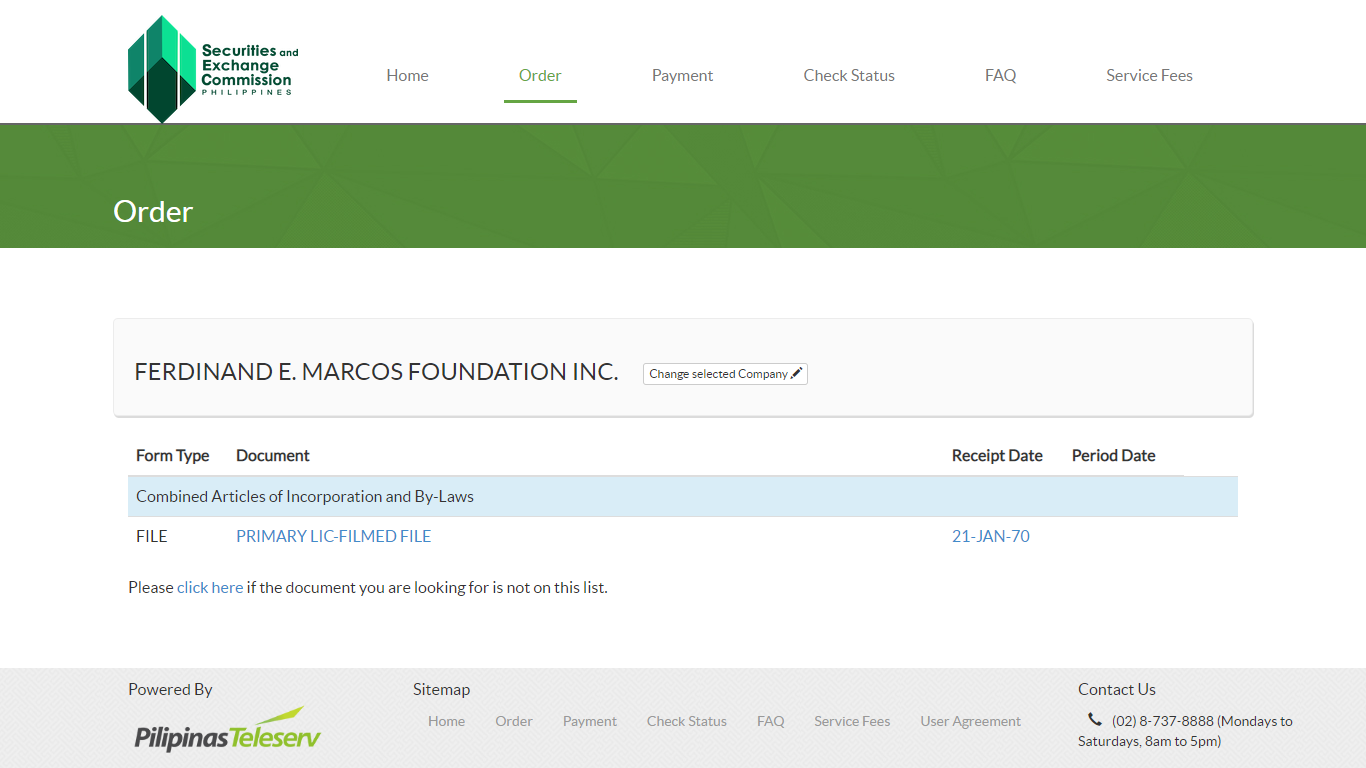
Marcos Sr.’s announcement made headlines even in foreign media, quoting his statement. A wire story published in the Miami Herald mentioned that in 1968, “Marcos was listed for the first time among the Philippines’ top 100 income taxpayers” with the equivalent of over $160,000 “mostly from legal fees earned before he became president in 1965” even though his annual salary” was only $15,000. A 2003 decision written by former chief justice Renato Corona noted that Marcos Sr.’s income tax return just before becoming president “did not show any receivables from client at all” and there were “no documents showing any withholding tax certificates.”
A Manila Bulletin article discussed in the Philippine Weekly Economic Review noted that Marcos Sr.’s “properties, savings and investments [were to] go to the people through a foundation which will be used to advance education, science, technology and the arts,” but “did not specify” which assets or if these included conjugal properties with Imelda. In his 1970 statement and other speeches, Marcos only said that “[provisions] will be made for [his] children, so that they shall be assured of satisfactory education and be prepared to meet their lifetime duties and endeavors.”
The first couple poured millions of dollars into their children’s education, money that courts have ruled could not have been legally obtained. Expenditures included tuition, allowances, housing, and donations. Neither of the two Marcos children, Imee and Bongbong, who studied in universities abroad obtained scholarships. Both returned home without a degree.
After Marcos was deposed in 1986, it became clear that besides the money spent on their children’s education, properties purchased abroad, deposits made in U.S. banks as early as 1968, funds in Swiss bank accounts determined to be illegally obtained, among others, were not among the assets of the FEMF. To reiterate, Marcos never stated outright that his countrymen would have a redeemable share in the wealth he purportedly donated to the Foundation.
The FEMF had its headquarters in the Goldenberg Mansion on 838 Gen Solano Street, San Miguel, Manila which was christened with the name “Ang Maharlika.” In a 1979 speech, Marcos Sr. said the mansion was “bought by the Marcos Foundation and converted into a guest house and then donated to the government,” but the property was listed in the 1979 Philippine Yearbook as the site of the Marcos Foundation Museum.
The Sandiganbayan declared in a partial summary judgment on December 19, 2019 that paintings found at the Goldenberg mansion were ill-gotten and were forfeited in favor of the government. It noted that the Marcos heirs admitted owning the paintings in the mansion and other locations that were valued at $23 million, more than the legitimate income of the Marcoses before they fled the country. A particular set of paintings by American artist Grandma Moses displayed at the Goldenberg Mansion was, according to a New York Times article, collectively purchased for more than $600,000, about twice the Court-declared legal earnings of Marcos Sr. and his wife in their last term in office.
A list of science foundations certified by the National Science Development board as of January 30, 1972 included the FEMF, which was described as a funder of “research studies on behavioral and social sciences and the humanities; scholarships; professorial chairs; publication and dissemination of results of research studies.” Perhaps its best known project was the UP Los Baños’s National Institute of Molecular Biology and Biotechnology for which FEMF committed P20 million for the purchase of laboratory furniture. A Supreme Court decision in 2004, however, pointed out that FEMF stopped paying the furniture supplier in early 1985 and its almost P1 million collectibles remained unpaid even after the fall of Marcos.
It appears that money from the Foundation was used for military research as well, although this is difficult to prove. An article published in April 1972 in the Far Eastern Economic Review mentioned that funding for the infamous Filipino-made missiles, one of which was nicknamed Bongbong, came “from the Marcos Foundation which the president said he would set up as his contribution to social amelioration.” It is unclear why no further progress was made in the local missile program beyond the first half of 1972.
Numerous government and non-state sources attest to the existence of FEMF-funded scholarships, but the number of scholars who benefitted from them appear to have been few. A Ministry of Education and Culture memorandum from April 1982 states that the Pangulo Scholarship Program was constituted by the Kabataang Barangay Foundation, Inc., and the FEMF in Oct. 1981. For the school year 1982-83, the program had 150 slots distributed in 13 regions. Pangulo scholars had to take one of five courses in six universities with “a monthly living yearly allowance of P5,000, excluding tuition and book allowance. In the 1986-87 academic year, slots for the Pangulo Scholarship slots were unlimited but students had to be active members of the Kabataang Barangay.
The name “Marcos Foundation” were in the copyright pages of numerous books purportedly written by Marcos Sr., many of which were distributed free. Studies have provided evidence that these books were in fact produced by ghostwriters and that at times, the money spent to publish came from government offers, not the FEMF. A statement of transactions in the files of the Presidential Commission on Good Government shows that the Foundation owed $31,120 to Prentice-Hall, Inc., publisher of “Marcos’s” book The Democratic Revolution in the Philippines, as of December 31, 1974.
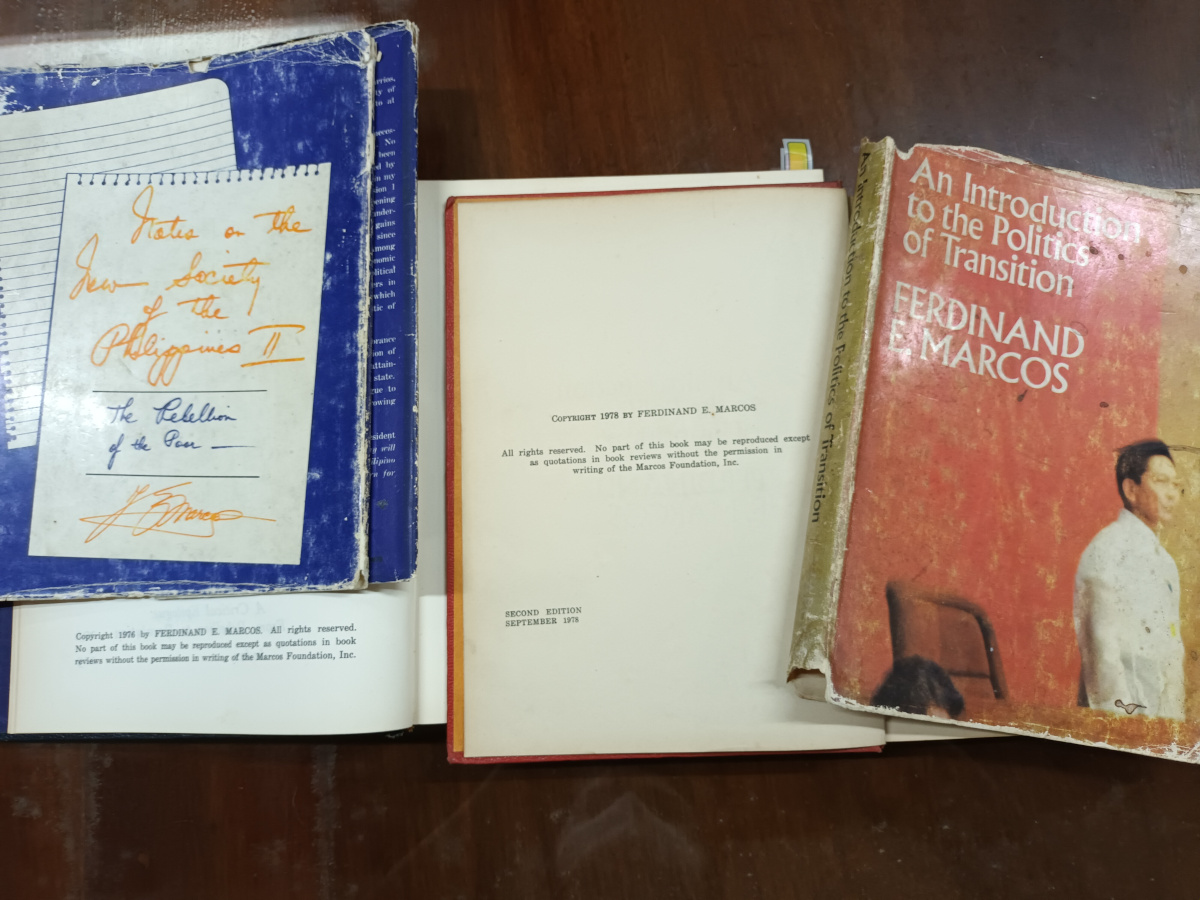
The Foundation also attempted to fund a professorial chair at Tufts University’s Fletcher School of Law and Diplomacy. Based on the February 1977 Official Month in Review published in the Official Gazette, the proposal to set up the chair was submitted to Marcos by Nihal W. Goonewardene, director of the Asia Pacific teaching fellowship program of Fletcher School based in Manila.” As reported by the Harvard Crimson, the FEMF had donated $500,000 to Tufts by January 1981 to establish the Ferdinand E. Marcos Chair for East Asian and Pacific Studies, and partly finance the construction of a school building. That same month, however, Marcos canceled the funding without withdrawing what had already been donated. Various explanations for this were given, but it was reported that numerous scholars declined the offer to fill the chair.
Lastly, the Foundation is also on record as a donor to at least one hospital and one university other than UP. These are the Mariano Marcos Memorial Hospital and Medical Center and the Mariano Marcos State University both name after Marcos Sr.’s father in Batac, Ilocos Norte.
From these snippets, it is quite clear that the Foundation was well endowed, but there was no indication that it had sufficient assets to make every Filipino wealthy or significantly address the country’s economic deficits; it certainly did not help in paying the country’s foreign debt. Moreover, the known assets of the Foundation were dwarfed by the billions of dollars in the Marcoses’ ill-gotten assets kept separate from what the FEMF managed.
FERDINAND MARCOS’S LAST WILL AND TESTAMENT
Not long after the EDSA Revolution, the PCGG focused on Marcos assets that were stashed abroad, in foundations that had the Marcoses as beneficiaries, or those kept for Marcos by dummies, some of which were recovered via compromise agreements. Based on the various versions of his last will and testament from 1980 to 1988, Marcos Sr. never had any other specified heirs besides his wife and children.
A portion of Marcos Sr.’s will from March 1982 was shown to journalists by his family in November 2016 to show what their patriarch said about his funeral and burial arrangements.
The PCGG has the full version of the will in its files and among the appendices of the book Marcos Legacy Revisited: Raiders of the Lost Gold by Erick San Juan, published in 1998. The portion not shown to the media contained details of his wealth that Marcos Sr. bequeathed entirely to his wife and their three children and adopted daughter Aimee. The FEMF is mentioned only as an executor in case of his wife’s “default or incapacity.” The will also contained this provision: “I hereby revoke any and all my other wills, codicils, or testamentary dispositions heretofore executed, signed, or published, or alleged to have been executed, signed, or published by me.”
If Marcos ever willed any of his assets to go to other people other than his only son and wife after his death prior to March 1982, he had effectively withdrawn it.
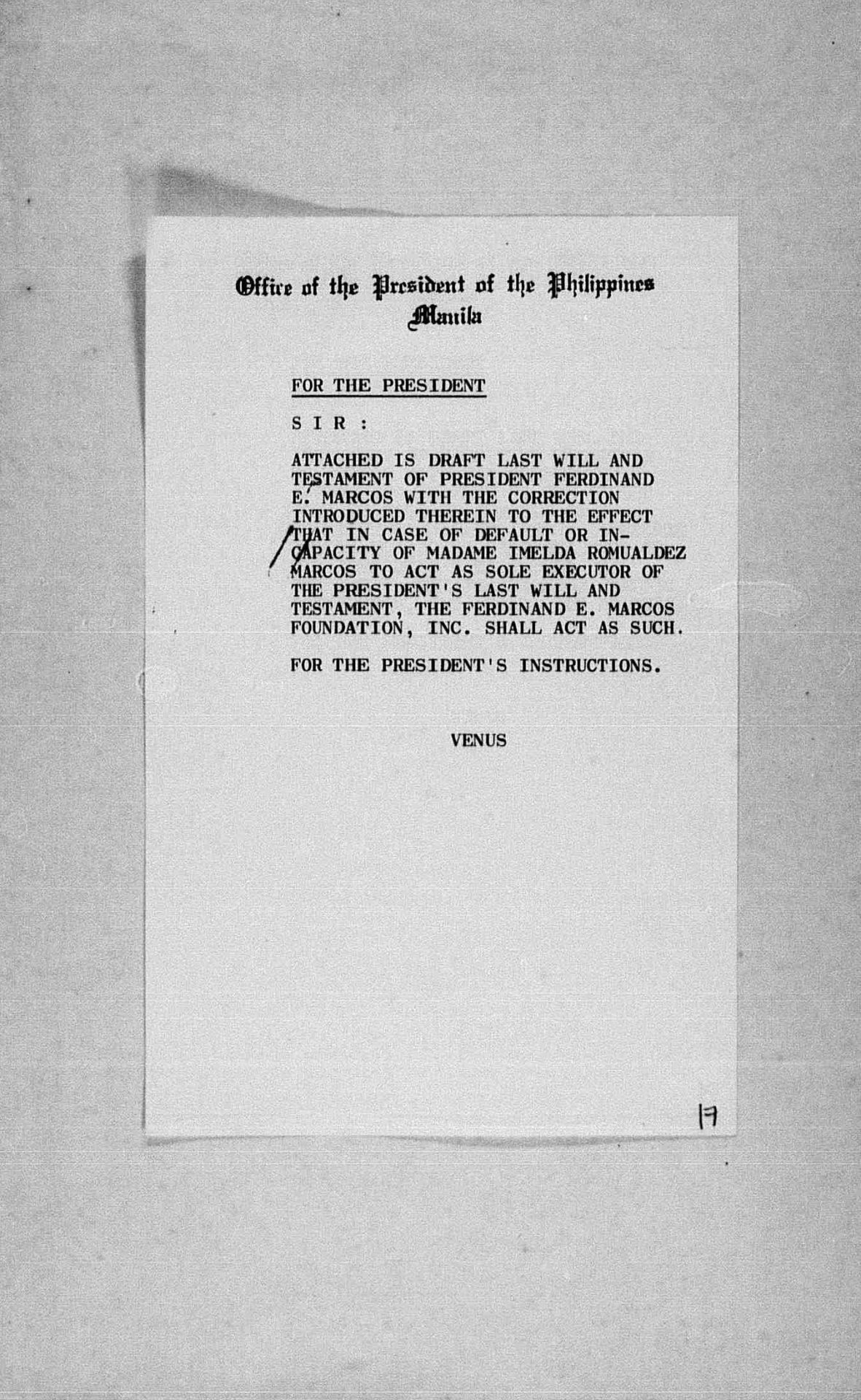
That revocation clause (a standard feature of wills) was retained in another version of his will, made a month later. This one too appears in San Juan’s book and kept in PCGG’s files. The most glaring alteration in this version is the removal of the Marcos Foundation as secondary executor and in its place, Bongbong was designated as executor along with Imelda.
A 1988 version of Marcos’s will has been published at least twice: in the October 7, 1992 issue of the Manila Standard, which noted that the document had been “acknowledged” by Imelda, according to former senator Rene Saguisag; and in San Juan’s Raiders of the Lost Gold. Substantively,the will remained similar to its earlier incarnation, again naming Bongbong and Imelda as co-executors. Bongbong’s name was dropped in 1982 and reinstated in 1988. The 1988 will, or a later version of it, appears to have been Marcos Sr.’s last.
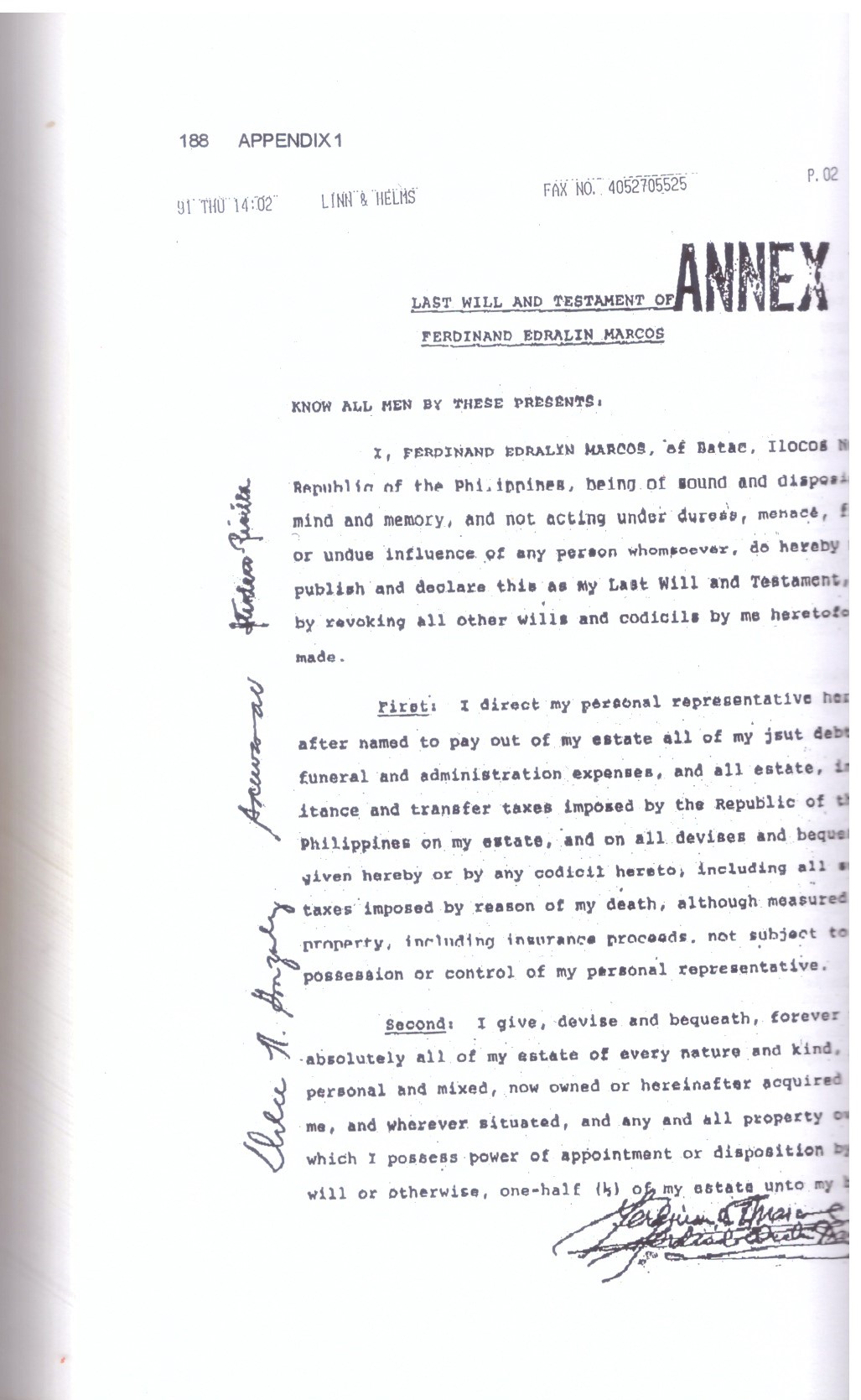
Ferdinand Sr. died on September 28, 1989. Despite the government’s attempts to disqualify them from performing their duties, the Supreme Court, in Republic v. Marcos II, affirmed that Bongbong and Imelda were the co-executors of Marcos Jr.’s will but this did not give either of them a say on what to do with the billions recovered by the PCGG.
FALSE PROMISES AND COMPROMISES
Not long after her husband’s death, Imelda began saying that she would use all of her family’s wealth for the benefit of the nation as supposedly intended by Marcos Sr. She said it in 1990 after she was acquitted of violating the U. S. Racketeer Influenced and Corrupt Organizations Act, mail fraud, and obstruction of justice and a year later, in a press conference on her return from exile. Imelda said she had wanted to release some of their money to support “typhoon victims, for earthquake victims, for [those affected by the eruption of Mt.] Pinatubo” but that “was not allowed.”
There is no known evidence to support this.
By that time, over five years had passed since the Swiss government had frozen the Marcos bank accounts in Switzerland after an attempted withdrawal of $200 million in deposits in March 1986, when the Marcoses were already in exile. When Imelda returned to the country, a settlement had been made in which the government would drop a civil racketeering case against the former first lady “in California and all other pending or future suits against her in U.S. courts in return for an estimated $8 million worth of Marcos property” in that country, the Washington Post had reported.
The settlement did not include the dropping of lawsuits filed by private individuals, some of which were successful.
By saying at that time that they needed permission to access funds for disaster relief, Imelda was practically stating that beyond what was discovered by various governments, the Marcoses had relatively little else. Indeed, even the P27 million in freshly minted bank notes that they “unintentionally exported” to Hawaii when they landed there in February 1986 were seized from them and partly returned to the Philippine government, already demonetized, in 1992.
Perhaps this was why she did not make the distribution of her family’s wealth a highlight in her 1992 presidential campaign. Her 15-point platform did not mention it, but some of her most important loyalists did it for her. Among them was writer/educator Reynaldo T. Fajardo, a founding member of the organizationFriends of Imelda Romualdez Marcos or FIRM, also known as FIRM-24K.
Fajardo wrote a number of pro-Marcos books in the late 1980s and the 1990s, including The Acquittal, Homecoming, and Inevitable Rise to the Presidency of Imelda Romualdez Marcos, published in 1991. In his book, Fajardo claimed that Marcos Sr. “wanted to use [his] stupendous wealth [purportedly hundreds of billions worth of gold] to turn the Philippines into a self-reliant and truly sovereign nation that would gain the respect of the rest of the world.” He added that in fact, Marcos Sr. “said that he was also sympathetic with the miserable plight of the other underdeveloped and developing countries” and “planned to help them, too.”
One can’t help but wonder why the former dictator did not do that when he was president.
Fajardo also said the “vast wealth that the late President accumulated and conserved” was intended to be used “to accomplish his vision for the country,” and that Imelda would “use effectively” this wealth “left with her by the President.”
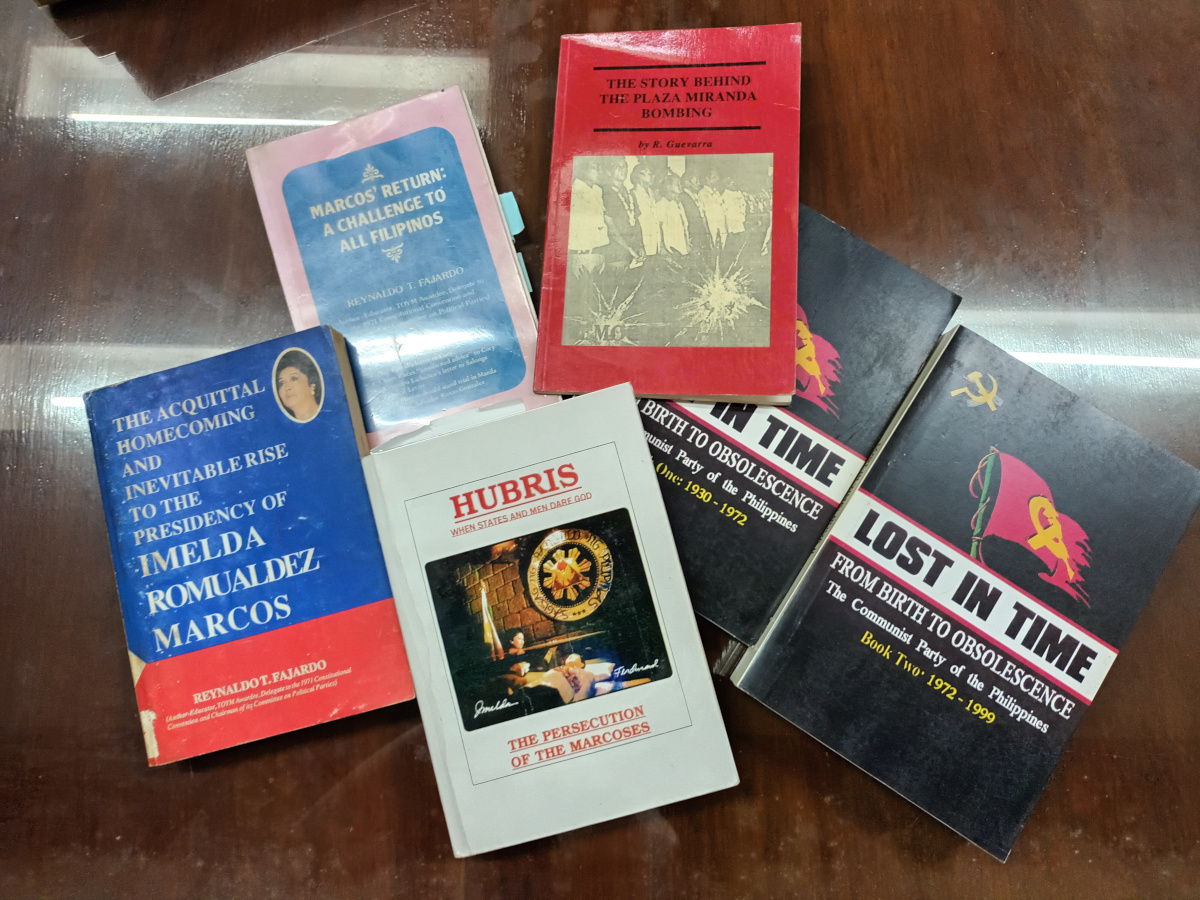
Imelda would later echo this as a campaign promise. An article published in March 1998 in the Manila Standard with the headline “Imelda Reveals more Secret Bank Accounts,” stated that the Marcos widow, then a presidential candidate, claimed that her family had over $800 million “in secret bank accounts abroad that she would give to the poor Filipinos if she wins the May presidential election.” That amount supposedly excluded funds that were previously identified as ill-gotten in Swiss bank accounts. Imelda said that even she was “not aware of the extent of [their] wealth,” further claiming that her husband’s money was a product of “diligence, hard work, foresight, entrepreneurship and God’s blessing.”
The Standard reported that Imelda showed the press a photocopy of a purported handwritten will of Marcos Sr. stating that “his worldly goods have been placed in the custody and for the disposition of the Marcos foundations [sic] dedicated to the welfare of the Filipino people.” Another article, published in Sol Jose Vanzi’s Philippine Headline News Online on April 15, 2004, dates this alleged “handwritten legacy” as being executed on April 9, 1973.
If true, then the wills Marcos executed in the 1980 leaving all of his wealth to members of his immediate family, superseded the 1973 one.
Still, Imelda insisted her husband wanted to leave all his wealth to the people. In December 1998, months after she withdrew from the presidential race to support the eventual winner, Joseph Estrada, Imelda testified during a senate hearing that she wanted the chamber’s help to “implement the last will and testament of the late President Marcos, to enlist assets in the hands of trustees, to implement the Marcos Humanitarian Foundation, so that we can help the country in our economic crisis and help the Filipino people in their agony and suffering.”
Imelda made the appeal after claiming in a series of articles published in the Philippine Daily Inquirer that her family “practically [owned] everything in the Philippines.” During her 70th birthday a year later, before a cheering crowd in a church, she declared in Filipino that she was convinced Estrada would find a way to settle with the Marcoses and this would lead to the establishment of a Marcos Foundation to help the country.
In 2004, she and her children threw their support behind presidential candidate (and Estrada ally) Fernando Poe Jr., because, as per Imelda, “FPJ [will help implement] the last will of Ferdinand Marcos, which is to help the people even if he [Marcos] is already gone.” According to an April 2004 Philippine Daily Inquirer article, Imelda said “that if Poe won, the Marcoses would willingly give [their assets] to the government so he could use it for the people.”
Over time, Imelda’s claims became wilder becoming not only about distributing money, but also promising a stake for Filipinos in the fictitious deuterium deposits in the Philippine Deep.
These did not exactly jibe with statement made not only by her husband when was still alive but also those made by Bongbong, especially when the family wanted to make compromise agreements with the government. Before the Marcos patriarch died, according to various news accounts, the family, through alleged intermediaries, offered to give anywhere between $2.1 billion to $5 billion to the government so they could return to the Philippines. Former vice president Salvador Laurel maintained that the elder Marcos was willing to give 90% of his wealth which could have left the family $550 million.
But Marcos Sr. was a notoriously unreliable source regarding his wealth. In 1987, he was still outrightly denying that he had any Swiss bank accounts or hidden wealth. In the same year, in the infamous “Marcos Tapes” in which the exiled dictator was secretly recorded talking about a plan to invade the Philippines, Marcos Sr. mentioned that he had billions of U.S. dollars worth of gold, and that Bongbong knew where part of that hoard was. During a hearing on the Marcos tapes at the Subcommittee on Asian and Pacific Affairs of the U.S. House of Representatives, Representative Jim Leach said that the Marcos gold, “while representing a monstrous theft, cannot possibly be of such monumental proportions.”
For his part, Bongbong has repeatedly asserted that his father made his money partly by trading in precious metals although this has never been judicially acknowledged in the Philippines. More importantly, Bongbong deviated from his mother’s claims by insisting that compromising or sharing their wealth with the government was not a means to fulfill some philanthropic final wish of his father but a way for their family to be rid of their remaining cases in one fell swoop.
A November 2, 1997 article published in the Filipino Express stated that Bongbong, then on hiatus from politics after failing to win a senate seat in 1995, wanted to compromise only to give his family immunity. That was the whole point, he stated; “Kaya namin ginagawa ito para malinis na ang lahat, mawala na ang kaso, maayos na ang hatian sa alleged Marcos assets.” He also insisted that there was no more hidden wealth beyond what had already been identified in the frozen Swiss bank accounts. If anyone could find more, it’s theirs, he effectively said.
An earlier settlement try in 1993 was junked by the Philippine Supreme Court for several reasons, including the impossibility of granting the Marcoses immunity (since they were the principal defendants in numerous cases and would not stand as witness against other defendants) and the fact that then president, Fidel Ramos was not a signatory to the agreement between PCGG and the Marcoses.
By 1997, Ramos, with support from the majority of the senate, asked Congress for a law allowing him to enter into a compromise with the Marcoses following a proposal from Bongbong, according to an October 1997 South China Morning Post article. While the senate, based on a Manila Standard article published that same month, was willing to do that or provide, in the words of the late senator Miriam Defensor Santiago, a (limited) special power of attorney, it did not happen.
Soon after Estrada became president, he reiterated his campaign trail declaration that he wanted to give executive clemency to Imelda, but as reported in a January 1999 Xinhua News Agency article, the family must have a united voice. Perhaps Estrada noted the disconnect between Imelda’s claims of unfathomable wealth for the people and Bongbong’s more pragmatic stance. He was mainly talking to Bongbong and no agreement was reached.
Bongbong made it seem that it was only through a compromise that the government could get its hands on the Swiss funds, but a condition for the transfer of the money was a final judgment of conviction on the Marcoses. By the early 2000s, this had not been met technically but all that was really necessary for the transfer was the 2003 Supreme Court decision, written by Chief Justice Corona, declaring the wealth in excess of the Marcoses’ legitimate income as ill-gotten. By then, the funds had reached over $650 million.
THE BASIS OF LOYALIST LOYALTY?
While Bongbong’s ultimately unsuccessful attempts to reach a compromise with the government appealed to decision makers, especially those frustrated with a supposedly underperforming PCGG and the Marcoses’ legal maneuverings, it was Imelda’s more fantastic claims that drew many die-hard loyalists to the family’s side. FIRM 24-K would hold on to Imelda’s promise of wealth distribution even through the last decade, when their president, Artemio Lachica, claimed that the share of its members in the Marcos wealth would only be given once the Marcoses get what they are fighting for. Apparently, some FIRM 24-K’s members were promised a million pesos for participating in the organization’s tree-planting program where they had to pay for the seedlings, according to a 2022 article published in the Philippine Star after the elections.
There are other groups like FIRM 24-K. In a November 2017 Facebook post, popular pro-Marcos vlogger Maharlika said she was not connected to what she labeled a scammer group, Maharlika Marcos Loyalist, Inc., which, like FIRM 24-K, collected fees while promising to give money or wealth. Photo/video evidence show that this group, Inc. was among the organizers of Imelda’s ill-fated 90th birthday celebration in July 2019 at the Ynares Stadium in Pasig where hundreds suffered food poisoning.
Both groups are recognized by the Marcoses. One of FIRM 24-K’s Facebook pages uploaded two videos showing that they can legitimately claim to have pushed Bongbong to run for national office again in the 2010 elections where he won a seat in the Senate, and another one that had Imelda pledging a P1 million seed fund to its “Anima Foundation.” Such Marcos-sanctioned groups have spun off into other organizations claiming to help give people a stake in the Marcos wealth but whose direct ties to the family, if any, are not readily apparent. An example is the scammer group Bullion Buyer Ltd., which organized an event in 2017 where thousands flocked to UP Los Baños to claim—unsuccessfully—a few thousand pesos allegedly from the Marcos’s coffers.
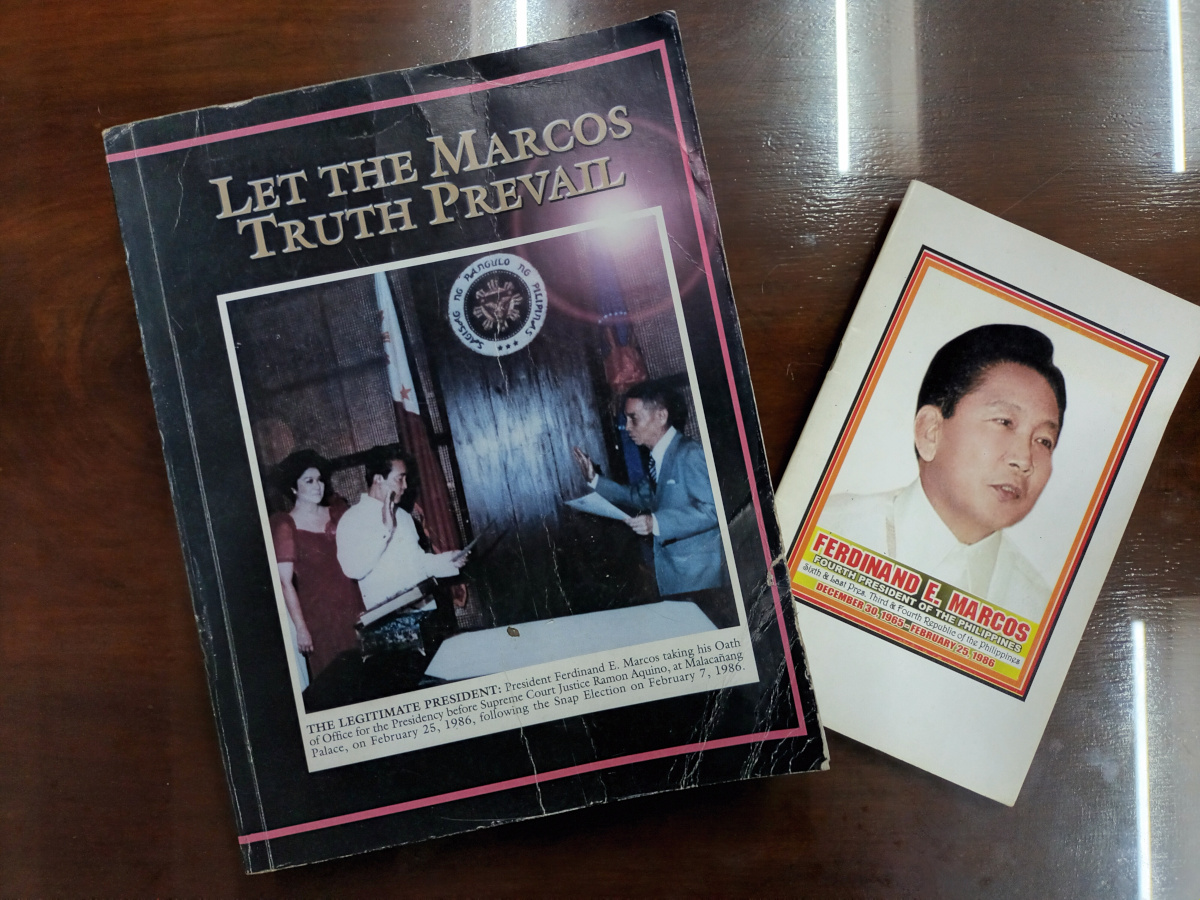
It is difficult to ascertain how many voted for Bongbong with the belief that he would pave the way for mass wealth distribution. Based on Google Trends, there was a spike in search interest on the late dictator’s last will and testament days after Bongbong’s win became a certainty. FIRM 24-K alone claims millions of members nationwide. The program at the UPLB event claimed that Bullion Buyer Ltd. already had over 281,000 beneficiaries. And no matter how many times these are debunked, sometimes by the Marcoses themselves, claims that the family would give away either a share in their “Tallano gold” or help people monetize their claims to “deuterium deposits” under a Bongbong Marcos presidency remain popular.
But what if this does not happen?
In 2002, according to a November 10 Inquirer article, several long-time loyalists claimed that they were severing ties with the Marcos widow — and preparing a book that would show the “real Imelda”— after it was said that she had settled with the Cojuangcos on the ownership of the Philippine Long Distance Telephone Co. for a staggering P2 billion. Among these loyalists were surprisingly, Cobarrubias, and Gadi. Their gripe? Imelda was, as mentioned by a loyalist, “in a position and has the means to fulfill” her promise of “setting up a Marcos foundation to benefit the poor.”
Gadi was quoted by the Inquirer as saying that Imelda was “in a position to help her loyalists, but I see no sign on her part.” Things were so bad between Imelda and her former “groupies,” as a November 2002 Arab News article called them, that they started calling Imelda a liar, or “a master of acting and deception.” They were still angry at Imelda a year later, with no indication that the incredibly wealthy Antonio Vialogo, who funded Imelda’s 70th birthday bash in 1999, would throw another birthday party for the former first lady again.
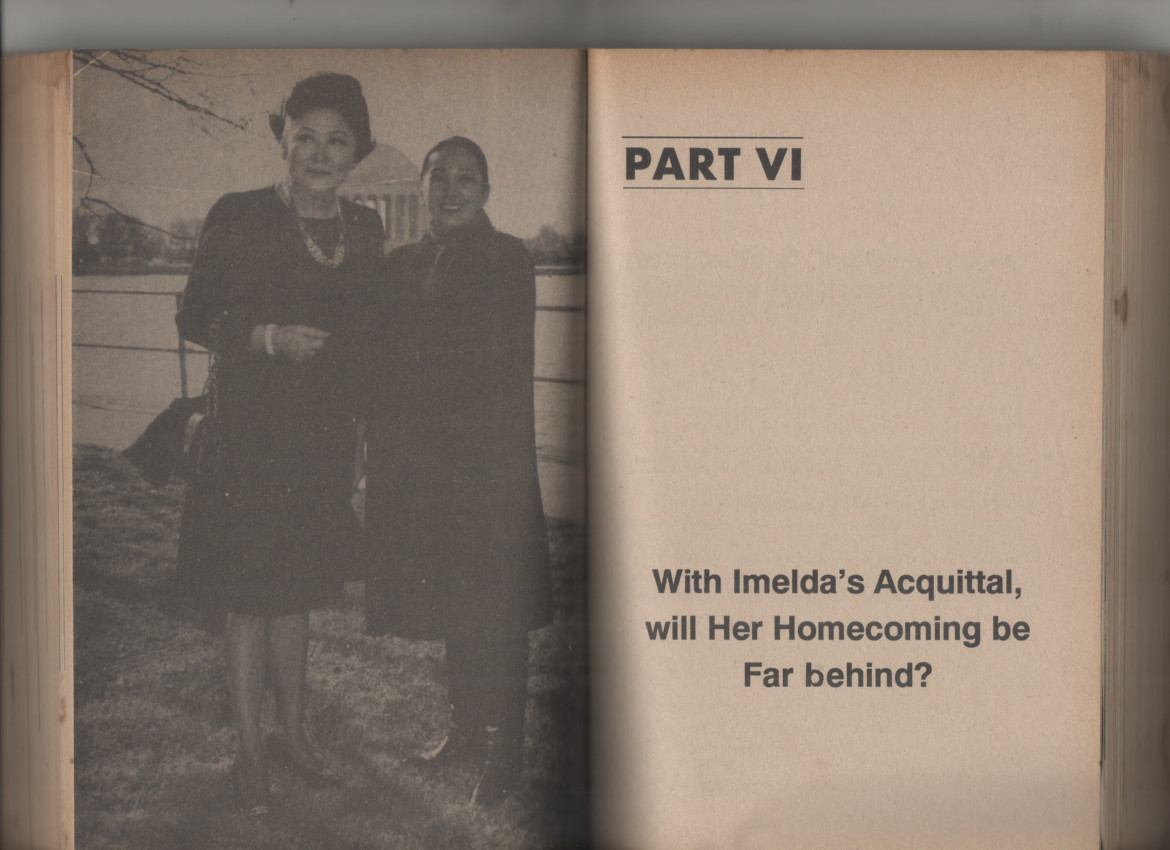
But in the year before Bongbong became a senator, Imelda reconciled with Cobarrubias and company. All of them became the staunchest of Marcos supporters again, and their tell-all anti-Imelda book did not materialize. According to a Rappler report, Oscar Violago, Anthony’s father, contributed P15 million to Imee’s successful senate campaign in 2019. Cobarrubias, during her recent guesting in Gadi’s online program, happily talked about funding the production and publication of the pro-Marcos books of the Katarungan at Katotohanan (Truth and Justice) Foundation, Inc., such as Hubris: When States and Men Dare God – The Persecution of the Marcoses.
For some, money probably does help fuel loyalty to the Marcoses. Marcos “inheritance” or “biyaya/ayuda” scams persist to this day. Some are relatively unsophisticated, such as a recently debunked claim circulating online after the elections that Bongbong was giving aid in exchange for personal information. Others are utterly bizarre, such as at least two recent videos, with hundreds of thousands of views on YouTube alone, claiming that Marcos Sr. is still alive, and that the man himself, and not Bongbong, would bring prosperity to all.
Even Cobarrubias, in conversation with Gadi, said that the former president metaphorically rose from the dead (“bumangon tuloy si Ser”) and campaigned in the last election. Indeed faith, partly disinformation-driven, in a dead man who supposedly gave up his wealth for his people—all evidence to the contrary— is probably also difficult to shake off for many who had already invested so much in the Marcos cause. Millions, scammed or otherwise, are probably ecstatic about the Second Coming of Ferdinand Marcos – Senior or Junior.
They helped put a Marcos back in Malacañang; will the Marcos heirs reward their faith?
Originally published by Vera Files on May 7, 2022.
If surveys on the fast-approaching elections hold, the Philippines will soon have a president who has difficulty discerning fact from pseudoscience — the way his mother also does.
On March 19, 2022, Martin Andanar, acting presidential spokesperson, asked Bongbong Marcos in an interview if he, like his mother, former first lady Imelda, “really believe[s] that there is deuterium in our country.”
This was his full reply:
Ah that, that’s not question, ep . . . people it’s been established that ah . . . especially, kasi ‘yung sa malalim, ah . . . nand’yan ‘yung Marianas Trench sa atin, nand’yan ‘yung sa . . . what—seven kilometers deep. Ah, that, that’s established that it, it belongs there—ah it belongs there—ah that it exists in those places. But it is something na, for, that, that, we will use for a hydrogen-based econ—ah energy economy. Ah . . . it will take time. Eh, for the future siguro p’wede nating tingnan nang mabuti ‘yan. Ito’y kasi ah . . . eh hydrogen is very clean, very green. Ah, ang ang ang ah . . . waste ng ng deuterium, pagka gumawa ka ng hydrogen, ginamit mo ‘yung hydrogen, ginamit mo ginawa mong fuel cell, ang lumalabas dyan, lang dyan is tubig. So walang, walang carbon ah . . . emissions ah . . . kaya’t malinis. But that’s for the future kasi it will require the same infrastructure that we now have for gasoline and for, ah . . . ano, for diesel, and for PNG, and LPG. All of these systems now took, what, over a hundred years to establish. Ah . . . kailangan magrere-adjust tayo. But I think because of the concerns with global warming, du’n ta . . . du’n talaga tayo papunta. At uhm . . . the time will come that we will start to shift to other alternative fuels, the greener fuels, and become a greener economy, we will have a greener system of energy. Nagsimula na, mula nung COP 26 na nagmeeting sa Edinburgh, na ang pinag—, binawasan ‘yung ah . . . pag ah . . . paggamit ng coal. Ang problema walang kapalit na renewable. Kaya tumaas ang presyo bigla. Kaya bumalik na naman ng kaunti dinagdagan na naman ng coal-fired, nga ga, ng kuryente na galing sa coal-fired at ah . . . kaya kailangan talaga natin babalansehin lahat ‘yan. That’s why deuterium is still very attractive ah . . . ah . . . attractive resource . . . ah para sa atin because hydrogen is, has been established, as a clean ah . . . as a clean alternative, a greener alternative to fossil fuels. So, yes, ah . . . ‘yung mother ko talaga malayo mag-ano ‘yan eh, malayo talaga mag-isip ‘yun, she’s very forward-thinking. So that’s, that was her thinking when she ah . . . started to show an interest in the deuterium deposits that have been established around the Philippines.
Bongbong erred when he said that the Marianas Trench is seven kilometers deep (it’s 11.034), that COP 26 was held in Edinburgh (it was in Glasgow), or that the pursuit of a greener economy began with COP 26 (as quite clear in the name, it was the 26th Conference of the Parties to the United Nations Framework Convention on Climate Change), and there is no mistaking his admiration for his “very forward-thinking” mother.
The son’s admiration for Imelda’s supposed prescience seemed to equal the intensity of his belief in deuterium. While a senator from 2010 until 2016, Bongbong filed two bills: Senate Bill 2593 on November 15, 2010 and SB 408 on July 3, 2013. These were identical bills for a Hydrogen Research and Development Center. Both died at the committee level.
The bills failed in their primary objective but succeeded in putting into the Senate’s legislative record, through the explanatory notes, this particular claim regarding deuterium: “Hydrogen is being processed from deuterium which is heavy water or hydrogen water without oxygen. This is obtained from the deep trenches of the world and the world’s largest deposit of deuterium is in the Philippines.”
Bongbong, while running for vice president in 2016, referenced SB 2593 in a press release to burnish his credentials as an advocate of alternative energy sources.
Mother and son’s conviction that the country has access to unparalleled deuterium deposits goes against peer-reviewed scientific research. At least one public historian, scientists, and journalists, have used that research to cure those who suffer from what is called “deuterium delirium,” but debunking does not always work in this age of disinformation.
THE SCAM BEGINS
When the first claims on deuterium deposits in the Philippines appeared in local media after the 1986 EDSA Revolution, the naturally-occurring hydrogen isotope was touted to be the resource that would solve the country’s economic woes.
At the time, everyone was aware of the enormous debt that the Marcoses burdened the country with before they were deposed. In a series of online articles about the deuterium hoax, the late historian Bob Couttie found an article released in August 1987 by the Media Mindanao News Service.
The article featured a local “scientist,” Cesar Escosa, who believed the “Philippine Deep in Surigao [del] Norte holds the largest deposit of deuterium.” He said this could be mined to “pay all [the country’s] foreign debts,” allow overseas Filipino workers to come home to “higher paying jobs,” and provide the world with an inexhaustible source of fuel. Escosa supposedly claimed that Washington and then president Cory Aquino was discussing the “deuterium project” as early as March 1986.
Escosa’s claims have not been backed by any reliable source.
Before he was declared a nuisance candidate when he tried to run for senator in 2001, Escosa said he was an accountant. He was also declared a nuisance when he filed his certificate of candidacy in the 1998 presidential race.
But there were other deuterium believers, notably in the House of Representatives. In August 1987, Rep. Mario S. Ty of Surigao filed House Resolution No. 98 requesting the “Departments of Environment and Natural Resources and Other Concerned Agencies of the Government to Conduct Feasibility Studies and Surveys to Determine the Presence of Deuterium Off the Coast of Surigao in Aid of Legislation.” In the same month, Glenda Ecleo of Dinagat filed HB 483 establishing the Philippine Deuterium Development Authority. Not to be outdone, Ty filed a similar bill.
Both died at the committee level.
In response to “numerous inquiries,” likely stemming from Escosa’s claims and these legislative filings, the Nonconventional Resources Division (NCRD) of what was then called the Bureau of Energy Development, Office of Energy Affairs (OEA), released a backgrounder entitled “Deuterium Explained” in the April-September 1987 issue of the NCRD newsletter Energy Alternatives.
In fairly accessible language, the NCRD affirmed that deuterium, “in combination with hydrogen, is already a recognized source of energy,” and that hydrogen was at the time “already being used as fuel for rockets and spacecrafts” and was “a feasible alternative to hydrocarbon (oil) fuel.”
But the NCRD cited a number of caveats: deuterium extraction can be done through electrolysis, but the process is expensive; and nuclear fusion, the process through which deuterium can become a “tremendous source of energy,” was (and still is) “very much in the research phase.”
The NCRD also revealed what scientists had determined after the discovery of deuterium in 1931: all water has deuterium.
“Deuterium exists in all types of water such as seawater, river water, ground water, rain and snow,” it said, adding that in water, “there is one deuterium atom for every 6,700 atoms of hydrogen.”
In NCRD’s view, deuterium production was not a bad venture—if very expensive and likely impractical—for the Philippine government to go into, but this should not be done on the belief that there is more deuterium in Philippine waters than anywhere else.
The NCRD made this more explicit in an article titled “OEA Paper Debunks Deuterium Myth” in the October-December 1988 issue of Energy Alternatives. Citing OEA Energy Research Laboratory chief Zalson Espino and Nonconventional Resources Division chief Conrado Huruela, it stated that “scientific facts make it impossible for deuterium deposits to be lodged in the Philippine Deep.”
The article further stated that breaking up deuterium oxide or “heavy water” to obtain deuterium gas “requires electric current [i.e., electrolysis] and cannot be initiated in water simply by high pressure [i.e., at the bottom of the Philippine Deep].”
“Even if, by some natural process, deuterium gas gets isolated from water, its natural tendency would be to rise and escape into the atmosphere [not, say, stay in the ocean depths] because it is much lighter than water,” it continued.
“The claim, therefore, that deuterium can be mined from the Philippine Deep and used to generate electricity is utterly fallacious and without basis,” the piece concluded.
“Oceanographic hallucinations.” That was how Roger Posadas, a PhD in physics and former dean of the College of Science at the University of the Philippines, characterized Escosa’s deuterium claims in a March 15, 1988 report in the Manila Standard. He called Escosa a “pseudo-scienfic swindler.”
As noted by Rappler in a January 19, 2021 fact check, all this lines up completely with peer-reviewed papers published well before Escosa started appearing in the news, such as “Deuterium Content as a Parameter of Water Mass in the Ocean” by Yoshio Horibe and Nobuko Ogura in 1968. Another one published in 2012, “Isotope Composition and Volume of Earth’s Early Oceans,” affirmed that hydrogen isotopes actually rise — not sink – in the ocean.
Despite all this —and the much-publicized debunking of an alleged breakthrough “cold fusion” experiment involving deuterium conducted by American chemists Martin Fleischmann and Stanley Pons in 1989 — the scam went on.
In 1989, Tarlac Rep. Herminio Aquino accused Escosa of defrauding some 10,000 applicants in a deuterium mining project. The congressman said that Escosa’s firm charged P5 “for application forms” and P10 for notarization when it had “already been established that there are no deuterium deposits in the Philippines.”
ENTER THE MARCOSES
There is no credible proof that the Marcoses were already attached to deuterium claims while the family patriarch was still president. In the last book attributed to him, A Trilogy on the Transformation of Philippine Society (1988), the dictator very briefly mentioned deuterium as a possible energy resource. In the portion on planned programs, Marcos Sr. said “oil exploitation and other indigenous energy deposits like coal, uranium and deuterium shall also be looked into.”
The deuterium dream was still alive in the early 1990s. A story in the textbook Growing Up Gracefully (Rex Book Store, 1991) partly used the deuterium hoax to illustrate the value of the country’s natural resources. It said that deuterium was “like diesel oil and is used for cooking, lighting, and for transportation.”
“With our big deposit of deuterium,” a character in the story said “the Philippines could be one of the richest countries in the world.”
But by the late 1990s, deuterium was no joke to Imelda. Before withdraing from the 1998 presidential derby, she talked about deuterium as a possible solution to the country’s economic troubles. It is unclear where Imelda picked up this advocacy, but Escosa’s discussion on deuterium in his continued public appearances may have contributed to her “education” on the topic.
According to Couttie, “the deuterium scam was firmly affixed to the Marcoses and Imelda promoted it heavily through amenable media people” by 2004 as Imelda often talked about this in interviews with both local and foreign media.
Over time, Imelda and her allies started to claim that she owned the deuterium deposits or the rights to them.
HYDROSPHERE RESOURCES FOR MOTHERING, INC.
What can be ascertained is that on March 31, 2005, a firm named Hydrosphere Resources for Mothering, Inc. applied for an offshore exploration permit in Davao Oriental. The following day, it also filed an application for a permit for the “exploration and development of gold, copper and other base metal resources” in the town of Gen. Luna, Surigao del Norte.
The firm’s address was 204 Mariano Marcos Street corner P. Guevarra Street, San Juan, Metro Manila— the main residence of the former first family before Marcos Sr. became president. The two documents are on display at the Batac World Peace Center/Marcos Photo Gallery, a museum Imelda set up near the Marcos Presidential Center/Mausoleum.
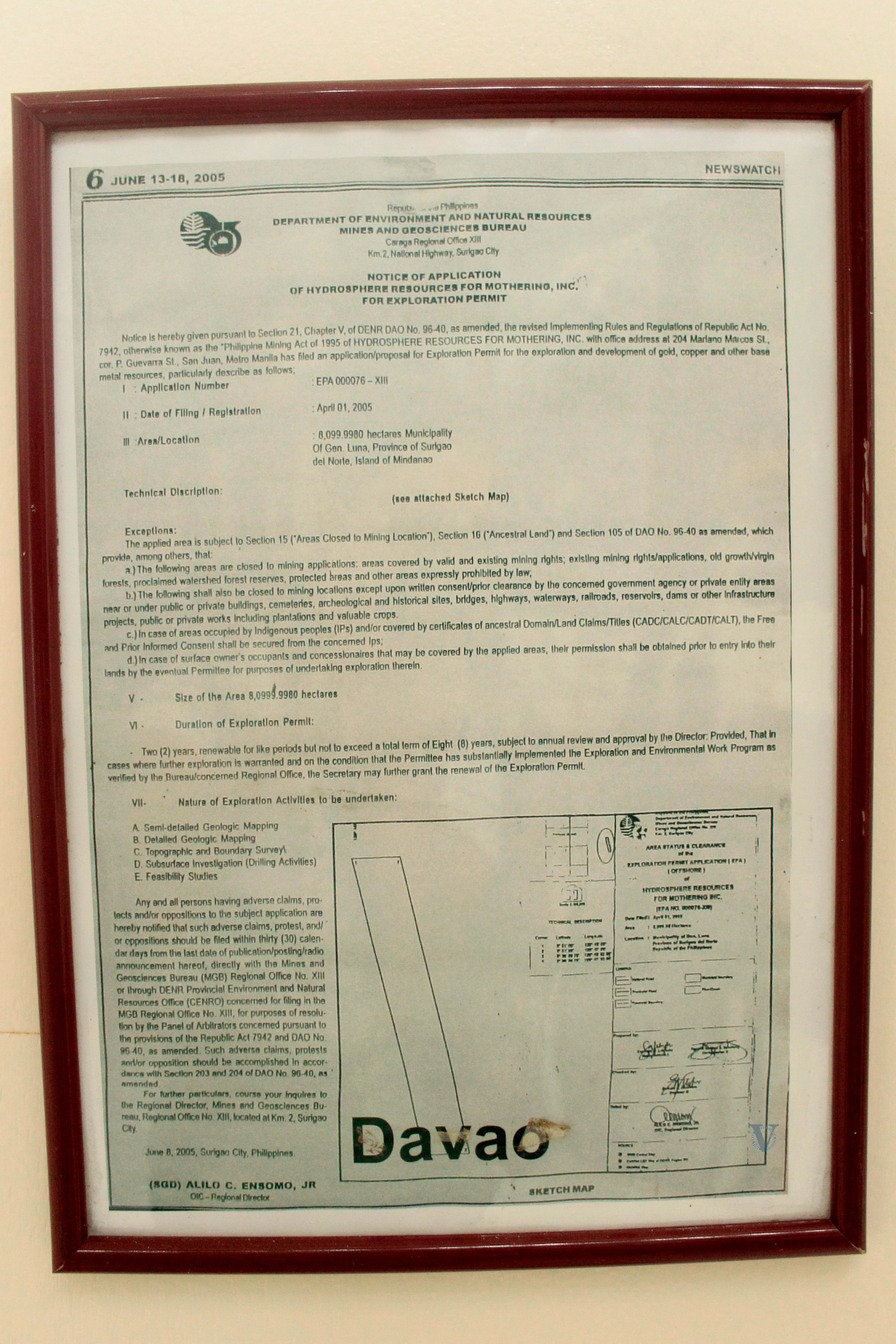
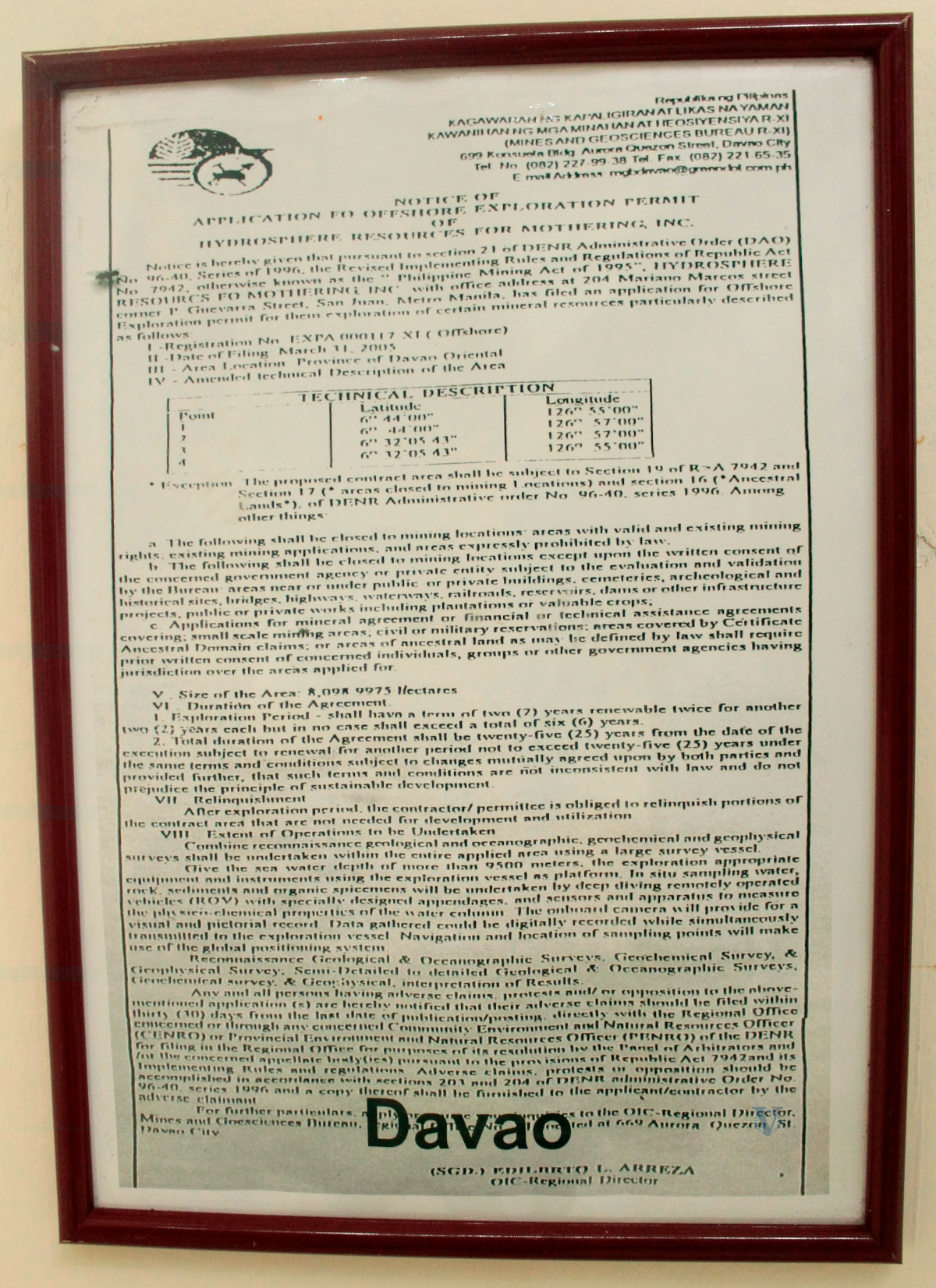
Both applications were denied, but another one was filed by Hydrosphere on April 5, 2005. This time it was for an exploration permit for “gold, copper, platinum, tungsten, etc.” in Guian, Eastern Samar.” This too was rejected because of the company’s failure to submit by the May 22, 2013 deadline the minimum capital requirements for mining applicants.
In short, Hydrosphere does not currently have any valid mining exploration permits on any of these sites along the Philippine Trench on the country’s Pacific coast.
A map of the Philippines adorns the “Twin Mansion” in Cabuyao, Laguna, one of the Marcos properties sequestered by the Presidential Commission on Good Government but is curiously still sometimes used by the family. Online pictures show that the map depicts the Philippines’s GOD — Gold, Oil, Deuterium, with the “D” located the “Phil. Trench, Deepest Part of the World.” Similar imagery can be found in Imelda’s Batac World Peace Center.
In Imelda: Mothering and Her Poetic and Creative Ideas in a Troubled World (2012), which is in many ways a rehash of Imelda’s other book Circles of Life, the former first lady tells the author, Cecilio Arillo, that deuterium is “the strategic energy of the future” and that “some people are already calling the Philippines as ‘God:’ gold, oil and deuterium.”
In a 2013 with Norman Pearlstine of Bloomberg Businessweek, Imelda claimed that she spent “millions of dollars a year to maintain her exclusive right to extract water from [the Philippine Trench] in the hope that having an abundance of deuterium can speed the development of advanced nuclear fusion reactors.”
Imelda’s Statements of Assets, Liabilities, and Net Worth when she was a member of Congress from 2010 to 2019 does not show any such payments.
The former first lady likewise said she had known about the deuterium deposits as early as the 1970s when Edward Teller, known as the Father of the Hydrogen Bomb, “persuaded her to develop her country’s deuterium in a 1971 visit to the Malacañang Palace.”
The register of Edward Teller Papers in the Hoover Institution Library & Archives in California shows that Teller, who died in 2003, visited the Philippines in 1981 to discuss matters such as nuclear fusion in conferences held in the country.
In later years, Imelda would drop Teller from her deuterium soliloquy and replace him with Harold Urey, “the discoverer of deuterium.” By this time, she claimed that it was Urey, who died in 1981, who informed her of the deuterium deposits in the Philippines.
Imelda, a notoriously unreliable narrator, repeatedly insists that Irving Berlin wrote the song “Heaven Watch the Philippines” specifically for her. The American composer himself denied this, according to a note in the interview of the Marcos couple published in the August 1987 issue of Playboy.
In the documentary The Kingmaker, Imelda says with a straight face that she visited the Calauit Safari Park after she returned from exile in 1991 and was saddened at what it had become. A caretaker interviewed in the documentary flatly denies this.
By 2015 Imelda and her son began doubling down on their deuterium claims.
In a video posted in one of the Facebook pages of the Marcos loyalist group Friends of Imelda Romualdez Marcos (FIRM), Imelda is seen hawking deuterium in, of all places, the wake of one of her most ardent supporters.
“[Mayroon] akong produkto na deuterium,” she says before the mourners that included the husband of the deceased. “Siya and magiging ating pang-gasolina . . . 20 centavos of deuterium is your fuel per month.”
Imelda said she would be meeting someone about deuterium the next day (the wake took place around late April-early May 2015). She added that FIRM would be the “foundation of the mission for mothering world peace” and that they would bring peace on earth using deuterium.
Shortly after, Bongbong, in an interview in the June 29-July 6, 2015 issue of BizNews Asia, said that his “mother had access to deuterium deposits,” which had “bequeathed” to her grandchildren.
Imelda found new partners in deuterium ventures within the last seven years, including one with groups such as the MHLK (M for Maharlika) Foundation and the Official Maharlika Association (OMA) where she is “Chairman – Emeritus.”
A photograph of an OMA board meeting with Imelda at the helm can be seen on its website. In one video of an OMA event held in late 2019—shortly before the pandemic, and about a year after Imelda’s conviction for graft by the Sandiganbayan—she claimed that the “vision” of the deuterium project was “paradise regained unto infinity” and that, contrary to her earlier claims, she had been involved in deuterium, “for several decades, even before [she] was first lady.”
Beside her while she delivered her speech—where she also claimed that she seeded the money that gave birth to Silicon Valley—was businessman Paul Monozca, chairman and CEO of OMA and related firms Formula Green Corporation and Formula Green Foundation. In recent years, Monozca made the news—before actually making the news via OMA’s “affiliate,” Maharlika TV— because of his involvement in the controversial planned Coral World Park in Palawan.
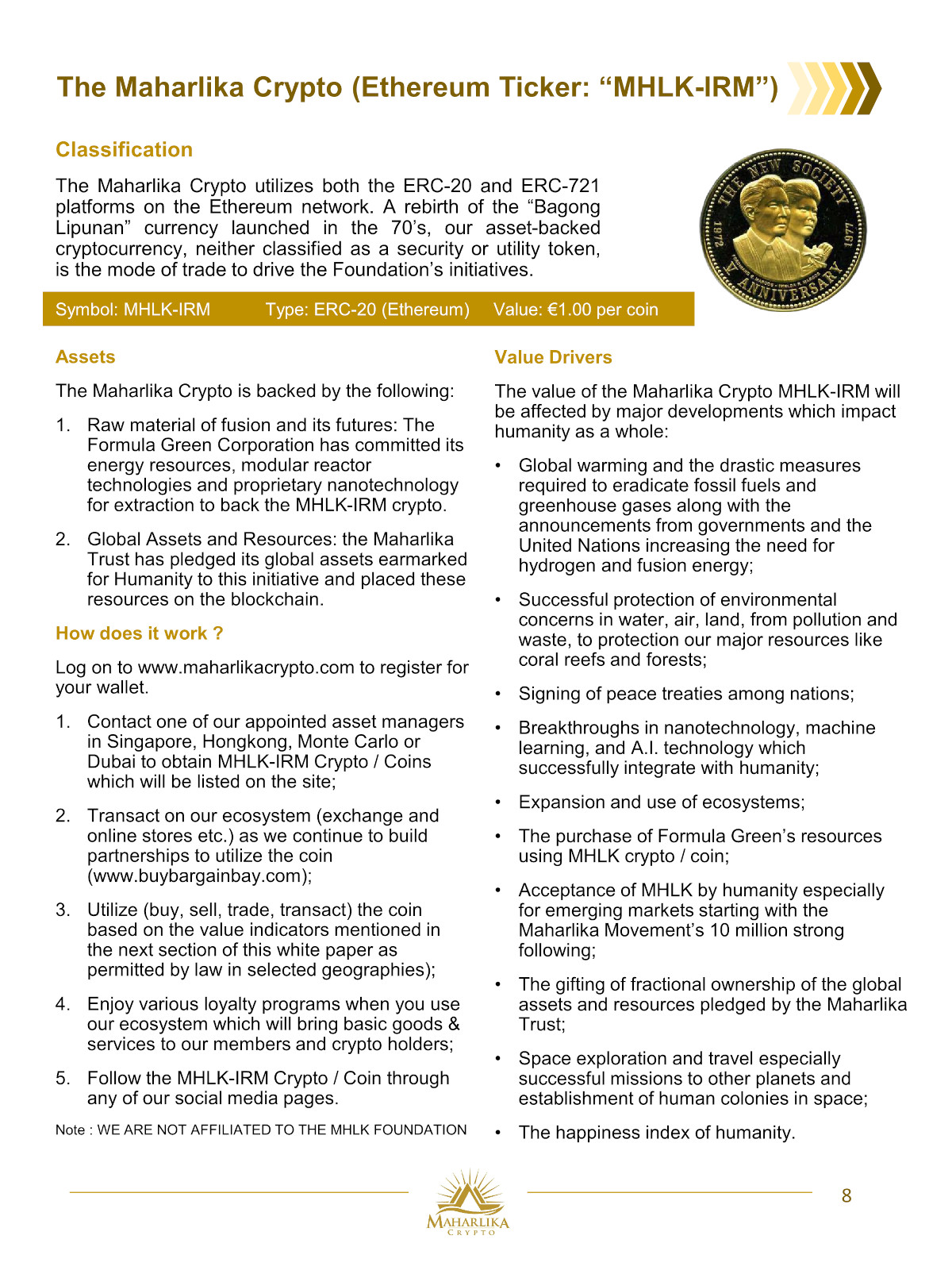
A document titled “Maharlika Crypto Whitepaper 2020-2021: An Asset-Backed Cryptocurrency Issued by the Formula Green Foundation for Humanity” discusses yet another venture of the Maharlika/Monozca group: Maharlika Crypto, once also called Maharlika Coin or the MHLK-IRM (presumably Imelda Romualdez Marcos) crypto.
The white paper claims that this cryptocurrency—perhaps closer in description to a toke—is backed up by the “Global Assets and Resources” of the “Maharlika Trust,” “the second largest philanthropic fund in the world,” and the “raw material of fusion and its futures.” These “futures” refer partly to Formula Green’s “concessions of the world’s largest deposit of the raw material of fusion energy called ‘Deuterium’ and stakes in the industry verticals including hydrogen economy.”
OMA is supposed to be a “movement of 10 million followers.” Among its “eight key groups” is the “Talleano Estate (direct heir).” While the Marcoses have repeatedly denied having ties to the Tallanos and the Tallano gold claim, the tale of the Kingdom of Maharlika ruled by the Tallanos, purported owners of the entire Philippine archipelago, appears on the website of the Marcos-affiliated party Kilusang Bagong Lipunan.
A further online search leads to a central document of the Tallano myth, the alleged Original Certificate of Title of the whole Philippines. An annotation in this “OCT-04”—several times proven fake—shows another connection of the myth to deuterium fakery: purportedly made in 1941, ten years after the discovery of deuterium. The annotation states that “Dr. H. F. Bain, Mining Affair Adviser to the Philippine Commonwealth” found “in the area 75 kilometers Southeast of Mindanao, a large undeterminable volume of Deuterium.”
It appears that practically every major Marcos-related group—from FIRM, which claimed in 2019 to have eight million members to the supposedly 10-million strong OMA— are closely linked to Imelda’s deuterium claims.
The Marcoses are also connected to other groups giving away deuterium share certificates: the Royal Alpha Omega Ring Trading Corporation and Philippine Deuterium Development Management Corporation. In April 2018, then Ilocos Norte governor Imee Marcos attended the birthday of the group’s founding chairman, Mahal na Hari (MNH) Filemon O. Reambonanza.
Even one of Imelda’s closest supporters and founder of Marcos Loyalists for God, Country and People, Serafia “Cherry” Cobarrubias, is listed as a board member of the MHLK Foundation. Yet another staunch Marcos defender, Rita Gadi, in the June 9, 2020 episode of her online program The Rita Gadi Hour, claimed that in the middle of the pandemic, Imelda was “finishing” (“tinatapos na”) the deuterium project which had a permit from the government.
Gadi said Imelda already had the instrument needed to extract deuterium from the Philippine Deep and only needed investments “na kanyang inaayos ngayon.” She repeated Imelda’s line about “paradise regained unto infinity,” and expressed belief that Imelda may be able to finish her deuterium project within that year and then, “maibibigay na niya sa atin sa Pilipinas ‘yang deuterium, the fusion of water and the energy.”
Of course, 2020 came and went, but deuterium from the Philippine Deep remains a pipe dream.
WHAT’S IN IT FOR THE MARCOSES
Peddling the lies about deuterium have served the purpose of the Marcos family which has been clawing their way back into power over the last three decades.
After returning from exile, Imelda seemed to have latched on to Escosa’s deuterium claims. The imagined deuterium riches of the country would effectively undo the two most damaging legacies of the Marcos dictatorship: a plundered economy and a generation of Filipinos sent into a diaspora to earn a living.
From a propaganda point of view, the deuterium hoax has detracted from public discussions the Marcos plunder — that it is permissible to abandon the effort to recover their ill-gotten wealth since deuterium’s promised bounty would replenish what was stolen from the country’s coffers. Imelda said as much in a February 25, 2006 feature on her by The Independent.
“Our problems are temporary. All I am waiting for is for my lawyers to end these cases against me and I will bring about a new economic order,” she declared.
Barely questioned by media and scientists on this, both Imelda and Bongbong continue to use the deuterium hoax in projecting themselves as advocates for a green environment and hope for the country. The promise of bounty —be it the Yamashita treasure, the Tallano gold, or deuterium in the Philippine Trench — calls for the surrender of the people’s trust to the machinations of the Marcoses.
It is the ultimate mother-and-son scam.
Originally published by Vera Files on September 25, 2017.
In the morning of Sept. 23, 2017, the 45th anniversary of the actual declaration of martial law by former president Ferdinand Marcos, thousands gathered at the University of the Philippines Los Baños (UPLB) Freedom Park in Laguna.
They said they came to collect the P10,000 they were promised every month for the next four years as claimants to their share of the Marcos wealth. The proof of their claim: a pamphlet purchased for P30, extolling Marcos for his ‘immortal legacy.’
Behind the pamphlet was an organization that had already been discredited by the Securities and Exchange Commission and whose leaders had already been charged with estafa by the National Bureau of Investigation way back in 2013.
So what was this gathering all about? Was there a hidden hand and a hidden agenda that set this in motion? To find some answers to these questions, I go back to my hometown and to a story my mother told me.
‘BAGONG LIPUNAN’ IN BICOL
In the first week of December 2016, my mother attended a Christmas party at a beach resort in our town in Sorsogon. Taking place at the same resort was a bigger gathering of about 100 people.
Nearing noon, someone from that group started praying over the loud speaker, prompting my mother to think that it was an evangelical event. But then the national anthem was played, signalling the start of a formal program. It was the next song, however, that jolted my mother’s memory: “Hymn of the Bagong Lipunan.” She knew the lyrics. My mother, 70 years old and widowed, said she used to hear it all the time over the radio during the martial law years.
After singing the hymn, she said, a handful of speakers started praising the life and accomplishments of Ferdinand Marcos, talking about how the country did so much better during martial law.
Through a friend who attended that program, my mother would learn that the speakers ended their event by convincing the crowd to provide details of their personal information and to buy a pamphlet, initially priced at P50, but later reduced to P30.
Marcos, the speakers told the crowd, bequeathed his wealth to the Filipino people in his last will and testament. The Marcos family was planning to honor the patriarch’s will. But the wealth could not simply be distributed to anyone. Each person’s identity had to be verified. So the people present were told to fill up personal information forms and to submit copies of their voter’s ID, birth certificate, marriage certificate driver’s license, or any such document that could prove who they are. With the pamphlet and their verified personal information, they would be entitled to an outright grant of P50,000.
Those gathered at the resort were asked to refer other interested beneficiaries. Designated coordinators handled the filling up of forms, the sales of the pamphlets, and the gathering of photocopies of the required documents. My mother later learned that the group that organized the event went by the name Bullion Buyer Ltd or BBL.
PROPAGANDA PAMPHLET
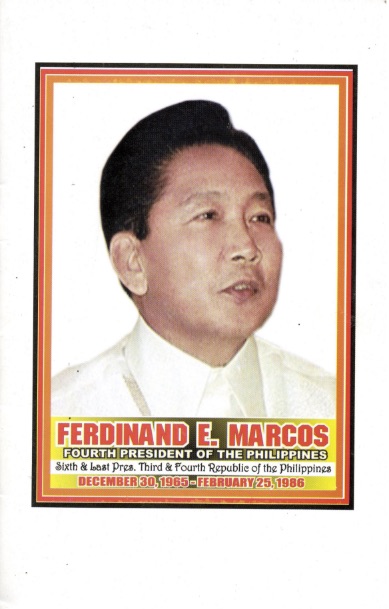
The BBL pamphlet mentions Ferdinand Marcos’s record of military service and the honors he received, many of which have been proven to be mere fabrications.
I eventually got hold of the pamphlet that belonged to my mother’s friend, who lent it to me with a caveat that should the promise of a bounty be true, I was to return it to her and we would split the promised amount. She herself is quite sure now that it was a scam, but she spent a mere P30 on it anyway, the cost of less than a jueteng bet.
The cover of the 30-page pamphlet is a portrait of Marcos in full color. The first page of the pamphlet bears its supposed title, Life and Achievements of Ferdinand E. Marcos, President of the Republic of the Philippines (1965-1986). The back cover is a copyright claim: Bullion Buyer Ltd, copyright 2016.
In my copy, the first page contains the name of the coordinator from whom the pamphlet was bought, and the participating leader the coordinator reports to. Stamped on the upper right hand corner of the first page is the name of the member of the national inspectorate to whom the participating leader reports.
The BBL claims that the organization was “established in 2004 which has about 3,100 officers and participating leaders nationwide.” It claims to have the humanitarian objective “of creating one social family and brotherhood of hearts.”
The organizer of the gathering at the UPLB is called One Social Family Credit Cooperative.
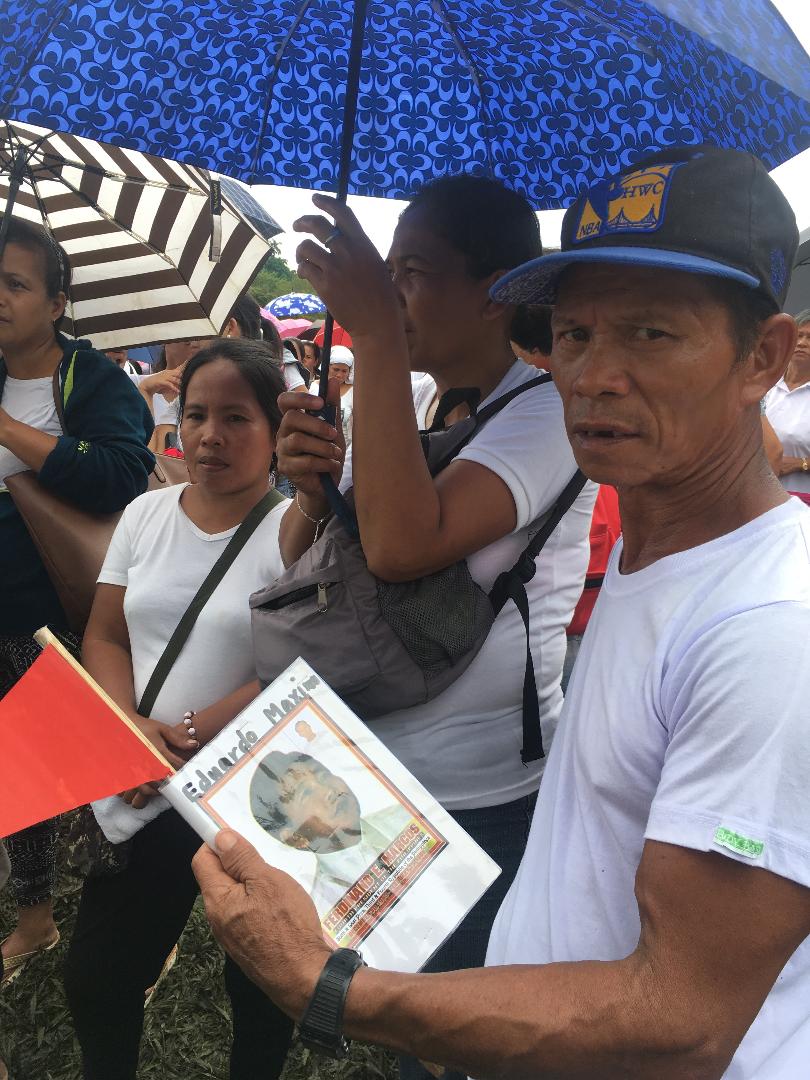
People who went to the UP Los Baños campus on Sept. 23 brought with them a pamphlet purchased for P30 produced by a group called Bullion Buyers Ltd. The pamphlet was a collection of propaganda materials on former president Ferdinand Marcos. Photo by Luis Liwanag.
What is meant by “one social family” can be gleaned from BBL’s mission statement: “The ‘family’ being the unit of government will be strengthened by providing them the Livelihood and Investment program thru the cooperatives….. intended to promote the ‘self-reliance’ as embodied in the Letter of Instruction of Pres. Ferdinand E. Marcos, as his ‘Immortal Legacy’ to his beloved countrymen.”
According to one former member, BBL’s founding date is Sept. 11, 2011, Marcos’ birthday. The supposed first organizational meeting was held at Max’s restaurant in Parañaque. Imelda Marcos was supposed to have graced the occasion had a typhoon not stood in her path.
There is even an online video clip of the meeting where two persons spoke. They were identified as “Red Dragon” and “Pink Diamond,” supposedly the pseudonyms of founders Emmanuel Destura and Felicisima Cantos.
PYRAMIDING SCHEME?
Destura and Cantos went into hiding after a charge of syndicated estafa was filed against them in 2013. Destura is said to be a son of Pedro Destura, a mayor of Prieto Diaz, Sorsogon from 1969 to 1971. The younger Destura claimed that Marcos entrusted to his father a still undetermined tonnage of gold deposits in Switzerland.
Emmanuel Destura surfaced at Los Baños yesterday, this time identifying himself as the chair of the One Social Family Credit Cooperative.
The continuing presence of BBL in various parts of the country prodded the Securities and Exchange Commission to issue an advisory on April 6, 2017 warning all local government authorities that the company is unregistered, and that its modus operandi violates the Securities Regulation Code.
From the syndicated estafa charge sheet, it appears that the group’s modus operandi is rather straightforward. The initial recruits were tasked to organize events in the different localities in the country and were initially called participating leaders. They also had to pay the organization P2,000. They were told they would be prioritized once the Marcos wealth is distributed. In exchange for their contribution, they would first receive P1 million and then 30 days later, $1 million.
Not one participating leader was ever paid a centavo, much less the millions of pesos and dollars promised. Some of these disaffected participating leaders were the ones who brought the charge of syndicated estafa against the leaders of BBL in 2013.
The sale of the Marcos pamphlet is a recent addition to the modus, and may have shifted the dynamics within the BBL. The participating leaders may have managed to find a way to recoup their contribution while waiting for the millions of pesos and dollars supposedly due them by selling the pamphlet.
When did the pamphlet become part of the package? The outright answer drawn from the pamphlet itself would be: after Rodrigo Duterte became president. The preface in the pamphlet says, “Can we blame President Marcos in (sic) declaring Martial Law? He only needs peace of mind in the same manner as President Duterte so that he can do all his good plans for the Filipino people.”
“President Duterte cannot do all his good plans for the country without unity. Can we now blame President Duterte if he declares Martial Law in the future if that is the only way in order to achieve peace, unity and prosperity,” the pamphlet continues.
Quite coincidentally, Duterte announced less than a month ago that the Marcoses were willing to return the wealth that rightfully belonged to the Filipino people. “The Marcoses – I will not name the spokesman – said that they’ll open everything and probably return those that had been discovered,” Duterte said.
Former senator Bongbong Marcos has distanced his family from the BBL. He similarly denied any involvement in the gathering at UPLB. “We do not know of nor have any involvement of any of these gatherings. It’s a scam pure and simple,” he said. “I have repeatedly warned the public against unscrupulous individuals who have been using our family to advance their personal interests.”
TRAFFICKING FALSEHOODS
So what does that UPLB gathering have to do with anything?
In 2004, unnamed publishers reworked an undated, earlier edition of a compendium of Marcos propaganda entitled Let the Marcos Truth Prevail. The 2004 publication bore the same title, was 855 pages long and distributed for free to various public schools and universities, mostly in the provinces. In the online catalogues of some universities, the bibliographic entry for this book cites Imelda Marcos as the author.
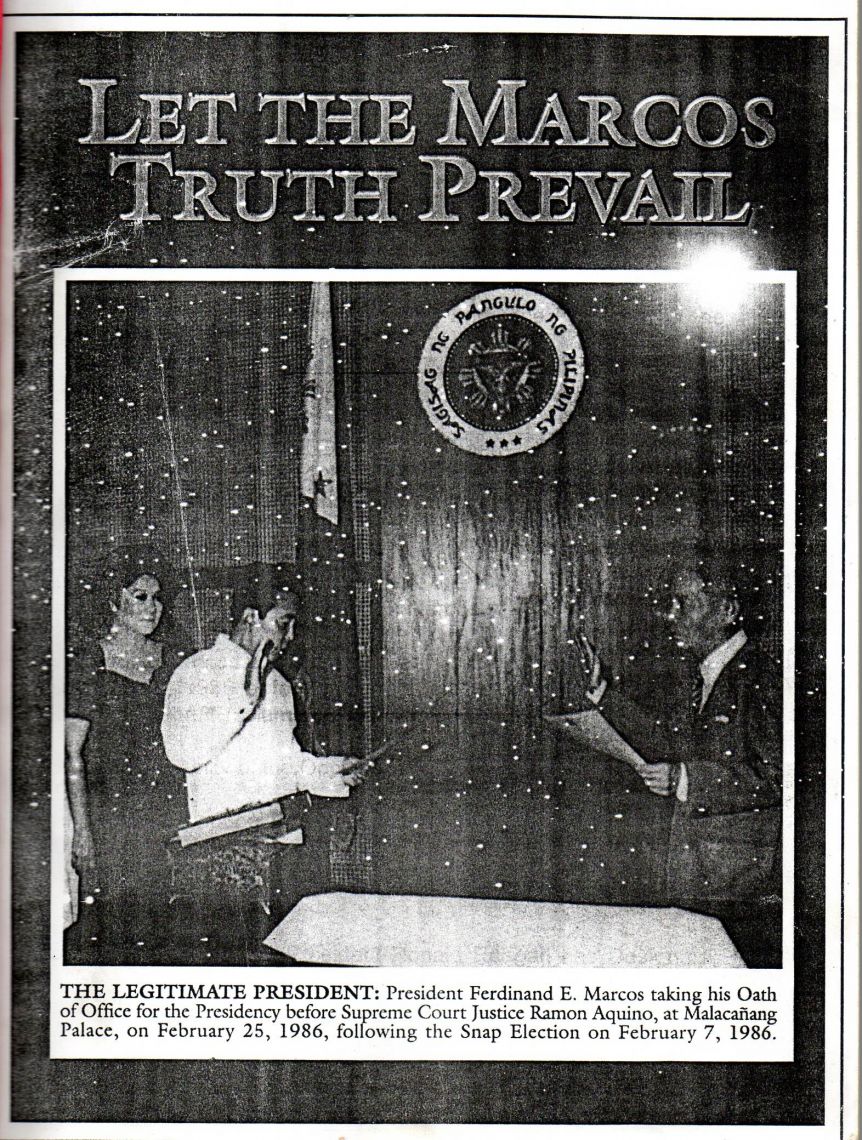
Photocopy of the cover of an 855-page book titled Let the Marcos truth prevail distributed to different universities all over the country. The publication had neither author nor editor, neither date nor publisher.
Authorship could only be inferred, as the book had neither author nor editor. And as is common in Marcos propaganda material, there is also no stated date of publication nor a publisher. But it contains scanned copies of Imelda’s checks as a widow of a war veteran, material that cannot simply be found in public records. The presence of the check strongly suggests that the Marcoses had direct knowledge in compiling and publishing Let the Marcos Truth Prevail.
Also, a journalist from the Marcos crony press known for her closeness to Imelda Marcos distributed copies of this book to those who were interested. The BBL pamphlet is an abridged version of this compendium.
Pages 5 and 6 of the pamphlet mention Ferdinand Marcos’s record of military service and the honors he received, many of which have been proven to be mere fabrications by Marcos. The entry is just a retyped version of a March 4, 1996 certification from the General Headquarters of the Armed Forces of the Philippines regarding Marcos’s military service. The one who encoded the certification from the AFP into the pamphlet was so faithful to the AFP text, even copying the line breaks from the original.
This AFP certification that is in both the pamphlet and the compendium lately resurfaced in the most unlikely of documents: the submission to the Supreme Court of Solicitor General Jose Calida arguing for the burial of Marcos at the Libingan ng mga Bayani.
Annex 13 of Calida’s Consolidated Comment on the case bears an odd pagination: 165. The Consolidated Comment is only 159 pages long. Page 165 comes from Let the Marcos Truth Prevail, the book that the Solicitor General used in arguing for the burial. This is literally the Solicitor General taking a page from the Marcos playbook.
In his submission to the Supreme Court, the Solicitor General did not bother to secure another certification from the AFP regarding Marcos’s military record nor did he have it authenticated. He merely submitted a photocopy of a page from Let the Marcos Truth Prevail. Not one of the oppositors in this case noticed it, not even the justices.
What we have then are replications of texts that carry the untruths of the Marcoses. In each and every replication, the Marcos myth survives and is passed on. The case of Bullion Buyer Ltd, and its new iteration One Social Family are instances of the trafficking in historical fraud.
Through the pamphlet, Filipinos, often the poorest and most marginalized among us, are induced to literally buy into the Marcos propaganda. In the case of the Solicitor General, such fraud, like Marcos being the recipient of so many war medals, has now found its way into our jurisprudence—a Marcos myth attempting to pass itself off as established fact.
Originally published by Vera Files on May 27, 2019.
A day after the May 13 elections, the “Marcos Centennial” and “Kabataang Barangay Worldwide” accounts in Facebook became inaccessible. Prior to their decommissioning, the two Facebook pages had actively campaigned for Imee Marcos. Despite being the unapologetic eldest daughter of dictator Ferdinand Marcos and racked by controversy surrounding, among others, her false academic credentials, she garnered almost 16 million votes in a successful run for a Senate seat.
Imee’s 2019 campaign explicitly called for a Marcos Restoration: Vote for her, and she would revive the programs of the deposed dictatorship. One of her campaign ads online merely repeated words like “BLISS,” “Kadiwa,” and “nutribun,” as if to conjure a treasured past.
In contrast, the 2010 and 2016 national campaigns of Bongbong, Imee’s brother, were more focused on his claimed achievements as governor of Ilocos Norte and as senator of the republic. He had previously run for the Upper Chamber in 1995, only nine years after the People Power Revolution that ousted his father from Malacañang; then, he failed in his bid, placing 16th in the race.
Under the administration of President Rodrigo Duterte, whose accommodating stance towards the Marcoses was highlighted by the burial of Ferdinand in the Libingan ng mga Bayani, Imee and her campaign handlers believed that reinforcing her ties to the Marcos regime was a winning strategy. She was the public face of the Marcos-era Kabataang Barangay, as well as head of the Experimental Cinema of the Philippines and representative of the second district of Ilocos Norte in the regular Batasang Pambansa, among other appointments and designations. Instead of downplaying her links to her father’s administration, she owned up to them. She wound up receiving the eighth-highest number of votes.
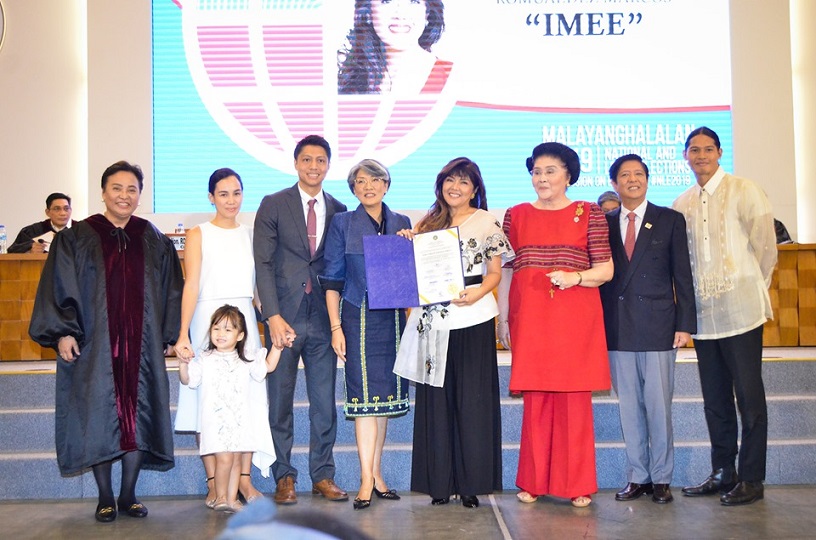
Senator-elect Imee Marcos is joined by her family including her mother, former First Lady Imelda Marcos, during her proclamation by the Comelec.
Interestingly, another online site related to the Marcoses became inaccessible late in the 2019 campaign season. The website of the Human Rights Victims Claims Board (HRVCB) (http://hrvclaimsboard.gov.ph), which contains the only complete government-recognized list of victims of human rights violations during the Marcos regime, 11,103 names in total, is currently offline. The site says: “This Account has been suspended. Contact your hosting provider for more information.”
Inquiries via email and Facebook messenger regarding the status of the site have not yet yielded any response. The HRVCB has ceased to function as mandated by Republic Act No. 10368 or the “Human Rights Victims Reparation and Recognition Act of 2013.” Enacted in February 2013, the law states that “The Board shall complete its work within two (2) years from the effectivity of the IRR promulgated by it. After such period, it shall become functus officio (of no further authority).” RA 10766 extended RA 10368’s effectivity from May 12, 2014 to May 12, 2018, while Joint Resolution No. 4, approved by President Duterte on February 22 this year, extended the availability and release of funds to the victims recognized by the HRVCB to Dec. 31, 2019. With the HRVCB closing shop, the Commission on Human Rights assumed the responsibility of distributing checks to the victims.
Even if the HRVCB has fulfilled its mandate, RA 10368 states that a roll of victims—who include those who were tortured, killed, involuntarily disappeared, or detained for exercising their civil or political rights, had their property or businesses unjustly or illegally taken over by enforcers of the estate, or were victims of such seizures “caused by” the Marcoses themselves—should have been produced by the Board, and a “compendium of (these victims’) sacrifices” should be “prepared and may be readily viewed and accessed in the internet.” The list uploaded to the site was the best approximation of an online roll of victims.
U.P. PRESIDENT DOES BALANCING ACT
RA 10368 also created the Human Rights Violations Victims’ Memorial
Commission (HRVVMC). Its Board of Trustees is made up of heads of the
Commission on Human Rights, the National Historical Commission, the
Commission on Higher Education, the National Commission on Culture and
the Arts, the Department of Education, and the University of the
Philippines-Diliman Main Library. The CHR chairperson is the HRVVMC
chairperson.
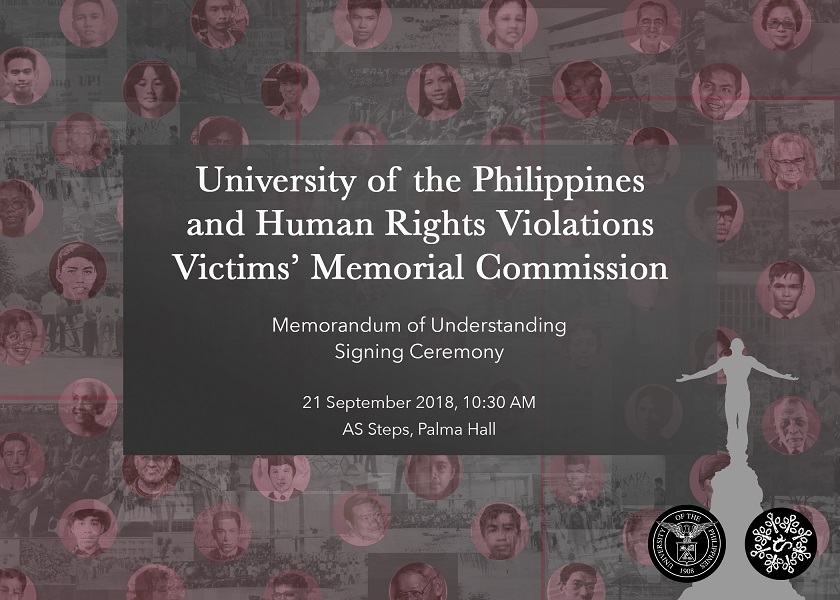
From the U.P website
According to RA 10368, the Commission’s main responsibility is the “establishment, restoration, preservation and conservation of the Memorial/Museum/Library/Compendium in honor of the (victims of human rights violations) during the Marcos regime.” The Commission agreed to establish a Freedom Memorial Museum, which was launched on April 28, 2016, just before the presidential elections of that year. At the time, the proposed site for the museum was the grounds of the Ninoy Aquino Parks and Wildlife Nature Center. President Noynoy Aquino led the launch.
Little was heard of from the HRVVMC after President Duterte’s election. On Sept. 21, 2018, the 46th anniversary of Marcos’ declaration of martial law, members of the HRVVMC gathered at the steps of the University of the Philippines’ Palma Hall in Diliman to sign a Memorandum of Understanding (MoU) with the state university for the establishment of the memorial museum and/or library. A new location for the museum had been determined — a vacant lot in UP Diliman, where the experimental Automated Guideway Transit railway track once stood.
Critics consider the MoU signing to be an offshoot of the condemnation received by UP President Danilo Concepcion when he attended a Kabataang Barangay reunion with Imee Marcos at UP Diliman’s Bahay ng Alumni on August 25, 2018. Concepcion was a high-ranking member of the Kabataang Barangay and Batasan assemblyman during the Marcos regime.
Also as reported in the Philippine Collegian on June 21, 1983, Concepcion was that year’s chairman of the recognition day committee for the graduating class of the UP College of Law. He appealed to then UP President Edgardo Angara to hold recognition rites specifically for students who completed all subjects in the law school curriculum, but were not necessarily qualified to graduate with a Bachelor of Laws degree. Imee attended that ceremony despite lacking an undergraduate degree, which barred her from getting her law degree.
Photos from the Concepcion-initiated academic pageantry were circulated by Imee’s camp during the 2019 campaign period as incontrovertible proof of her earning a degree from the UP College of Law. UP had to issue a statement—twice—to say that she did not graduate from UP.
Despite Concepcion’s ties to the Marcoses, the construction of the Freedom Memorial Museum in UP Diliman is proceeding as scheduled under his watch. The museum has a website (https://www.thefreedommemorial.ph/) that details the mechanics of the Freedom Memorial Museum Design Competition. Entries were accepted from April 5, 2019, until May 15, 2019. A winner is scheduled to be announced this June.
Once constructed, the Freedom Memorial Museum will share common space with numerous structures and locations bearing names closely associated with the Marcos regime. Most prominent of these is the Cesar E.A. Virata School of Business, named after the former prime minister and Marcos’ chief technocrat. The school, formerly the College of Business Administration, was renamed in April 2013. The College of Law also houses the UP Law Class of 1987-Juan Ponce Enrile Reading Room, which bears the name of the defense minister and architect of martial law. The room was formally turned over to UP in June 2013. UP President Concepcion was then dean of the College of Law.
THE OLD NETWORK IS ACTIVE AND DELIVERING
Then there’s the money for the arts. Irene Marcos-Araneta was a known patron of Dulaang UP. But her largesse is dwarfed by that of a Marcos associate. Currently under construction is the Ignacio B. Gimenez Foundation–Kolehiyo ng Arte at Literatura Theater. The groundbreaking ceremony for the theater was held on June 13, 2013, and a cornerstone-laying ceremony was held on Dec. 14, 2016. Gimenez was in attendance during both ceremonies. At least two theaters are already named after him: the Ateneo Areté Ignacio B. Gimenez Amphitheater and the CCP Black Box Theater, formally known as the Tanghalang Ignacio Gimenez, inaugurated in 2017 and 2018, respectively.
An alumnus of UP, Gimenez, husband of Fe Roa Gimenez, former social secretary of Imelda Marcos, has served as the chairman of the Sogo Group of Hotels. He represented Sogo during its turnover of outdoor exercise equipment donated to UP Diliman in January 2015. These can currently be found at the College of Science Complex and the Department of Military Science and Tactics Complex. There is also an Ignacio B. Gimenez Award for UP Student Organization Social Innovation Projects. Gimenez was also among the first UP Gawad Oblation awardees. He was bestowed the award with 13 others—including businessman Magdaleno Albarracin, who, as recorded in the minutes of the 1288th meeting of the UP Board of Regents on June 20, 2013, “made a commitment to donate “₱40 Million as a condition to the renaming of the College of Business Administration into the Cesar E.A. Virata School of Business, after the finality of the Board’s approval on the said renaming.”
Besides setting up at least one dummy firm for the Marcoses’ ill-gotten wealth, according to a 2008 Supreme Court minute resolution, Gimenez was also tangentially connected to at least one other UP-related project. On June 27, 1984, Gimenez, as president of the Transnational Construction Corporation (TNCC), signed an agreement to sublease a lot in Pasay City owned by the Light Rail Transit Authority (LRTA). The principal lessee of the LRTA property was the Philippine General Hospital Foundation, Inc. (PGHFI). At the time, both LRTA and PGHFI were chaired by then First Lady Imelda Marcos.
LRTA agreed to lease its Pasay property to PGHFI for P102,760 a month. Gimenez’s TNCC agreed to sublease the property for P734,000 a month. The significant difference was supposed to go to UP PGH. After the EDSA Revolution, the state attempted to convict Imelda for this and related deals for violation of the Anti-Graft and Corrupt Practices Act. She was convicted in 1993 but was acquitted in 1998 due to technicalities. In his dissent to the 1998 decision, Justice Artemio Panganiban noted that “(other) than her out-of-court utterances, petitioner has submitted no evidence whatsoever to indicate that the money gained by PGHFI from TNCC (and lost by the LRTA) was actually spent for a hospital or any other charitable purpose.” A director of the PGH interviewed by journalist Raissa Robles in the early 1990s told her that “PGH never got a centavo” from PGHFI.
THE REHABILITATION OF THE MARCOS NAME
Since their return to Philippine politics in 1992, only six years after Ferdinand Marcos was deposed, the Marcoses have been spearheading attempts to rehabilitate their patriarch’s rule. As is now clear, it was borne out of their need for political survival than out of filial duty.
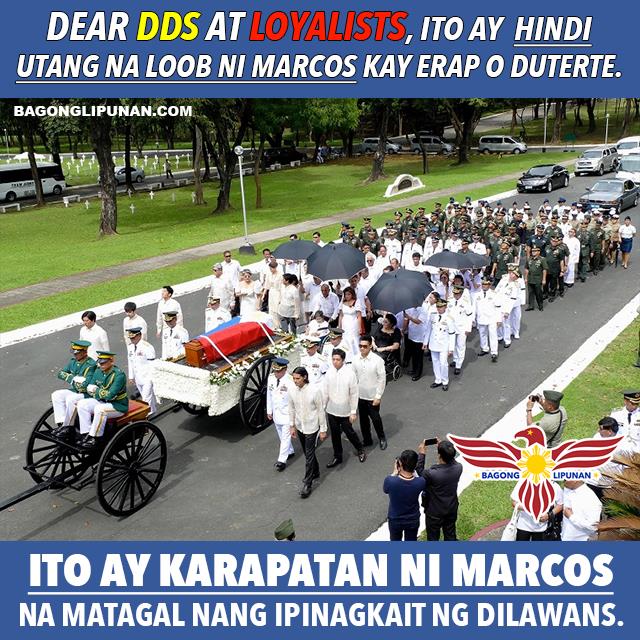
From the Bagong Lipunan Facebook Page
In 1992, Bongbong, as the representative of the second district of Ilocos Norte, filed House Resolution No. 80 calling for the return of Ferdinand’s remains from exile in Hawaii and according his father a state funeral “befitting a former president of the Republic.” Less than half of the House co-authored the resolution, which was consigned to the House archives in 1994. In March 1993, Bongbong filed House Bill No. 8363, which aimed to rename the Mariano Marcos State University in Batac to the Ferdinand E. Marcos State University. The bill died at the Committee on Education and Culture that same year.
Imee, in contrast, left such lionization attempts outside of her legislative agenda. In her 2012 Statement of Assets, Liabilities, and Net Worth, Imee is listed as the officer-president of the Marcos Presidential Center, Inc. since January 16, 2002. Among the Center’s projects were: a website (www.marcospresidentialcenter.com, launched in 2002, now defunct); the publication of books that highlighted the achievements of Ferdinand, initiated in 2007; the renovation of the Ferdinand E. Marcos Presidential Center in Batac, Ilocos Norte; and the drafting of public relations pieces. The Center provided the text and photos for a press release, used as a basis for articles published in various media outlets, regarding the November 2017 marriage of Michael Marcos Manotoc, Imee’s son, to Carina Manglapus, granddaughter of former senator Raul Manglapus. The piece characterized the marriage as a reconciliation of rival political families from Ilocos.
In one of his papers, film scholar Joel David mentioned an informal interview with then-representative Imee, who “expressed her plan to popularize what she called ‘Marcos studies.’” On Sept. 16, 2002, the Manila Standard printed an article by Imee titled “Revisiting Martial Law.” There, she stated that the “time has come to study intently, intensely, dispassionately, completely, the Marcos era, before, during and following the Martial Law period, applying intellectual rigor over emotion, scholarship, not partisanship.”
Manuel Alba, once Marcos’s budget minister, was interviewed twice by Professors Teresa Encarnacion Tadem, Cayetano Paderanga, and Yutaka Katayama for their oral history project, “Economic Policymaking and the Philippine Development Experience, 1960-1985.” In one of the interviews, held in January 2009, Alba mentioned that Imee had a “Pamana project,” which intended to “document the Marcos’ achievements,” for which he committed to “write on budget and education.” Alba also revealed that Onofre D. Corpuz, one of Marcos’s education ministers and former UP president, was going to write a “framework” for the project. It is unknown if there was any further progress on the project before Corpuz’s death in 2013.
In a lengthy interview by Jojo Silvestre, published on the website of the Philippine Star on Nov. 21, 2010, Imee complimented Alba along with many other members of the Marcos cabinet, calling him brilliant. In the same interview, Silvestre noted that “Cabinet meetings must have been a free-for-all.” Imee revealed intimate knowledge of such meetings, as if she had attended some, though she was not known to have held any Cabinet-level position during her father’s rule. When asked about martial law, Imee told Silvestre, “I don’t see myself as an apologist. Sa haba ng panahon, you have to judge it in context, in its time … (The) other side of the story is very well documented. And even over-documented.”
IMEE MORE FOCUSED IN RESTORING MARCOS NAME IN HISTORY
During the 2019 campaign, Imee seemed unwilling to engage on the issue of her family’s ill-gotten wealth and the abuses committed during the Marcos regime. When asked about the recent Sandiganbayan decision convicting her mother Imelda of seven counts of graft, Imee would cite the sub judice rule barring public disclosure of details of pending court proceedings. The rule does not apply to the cases on the Marcos’s ill-gotten wealth that have been decided with finality, though she denied that any existed when she filed her certificate of candidacy on Oct. 15, 2018.Earlier, during the 2018 anniversary of the assassination of Ninoy Aquino, she was quoted by the Philippine Daily Inquirer as saying “(the) millennials have moved on, and I think people at my age should move on as well.”
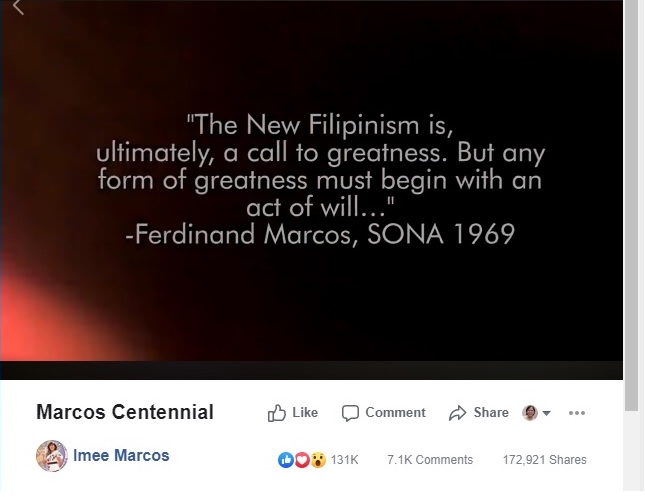
Propagating Ferdinand Marcos’ statements. From Imee Marcos Facebook Page.
She made a similar statement almost 20 years ago. On Dec. 12, 1999, the Associated Press quoted her as saying, “Many of the younger people who don’t have so many preconceived notions, actually received a lifetime virtually of propaganda, are beginning to think that it is important to review what actually happened.”
Under current political conditions, Imee may succeed where brother Bongbong failed. The votes that secured for Imee a Senate seat were not just a product of nostalgia for an authoritarian past or merely a reflection of first-time voters’ ignorance of the brutality and excesses of the Marcos regime. They were also, in part, paid for by long-time allies and cronies of the Marcoses who, in the process of buying respectability from academic institutions, also contributed to the cause of burnishing and enthroning the Marcos name in Philippine history and politics.
The increasingly favorable political fortunes of the Marcoses and their cabal may also mean the effective erasure of memories of both human rights violations and compromises with those who obtained their wealth through plunder or abuse of authority, signaling that if the Marcoses could get away with such abuses, so can others. If the record of the human rights victims of the past can disappear, so, too, can the record of the comparable brutalities of the current dispensation. One bloody bejeweled hand washes the other.
